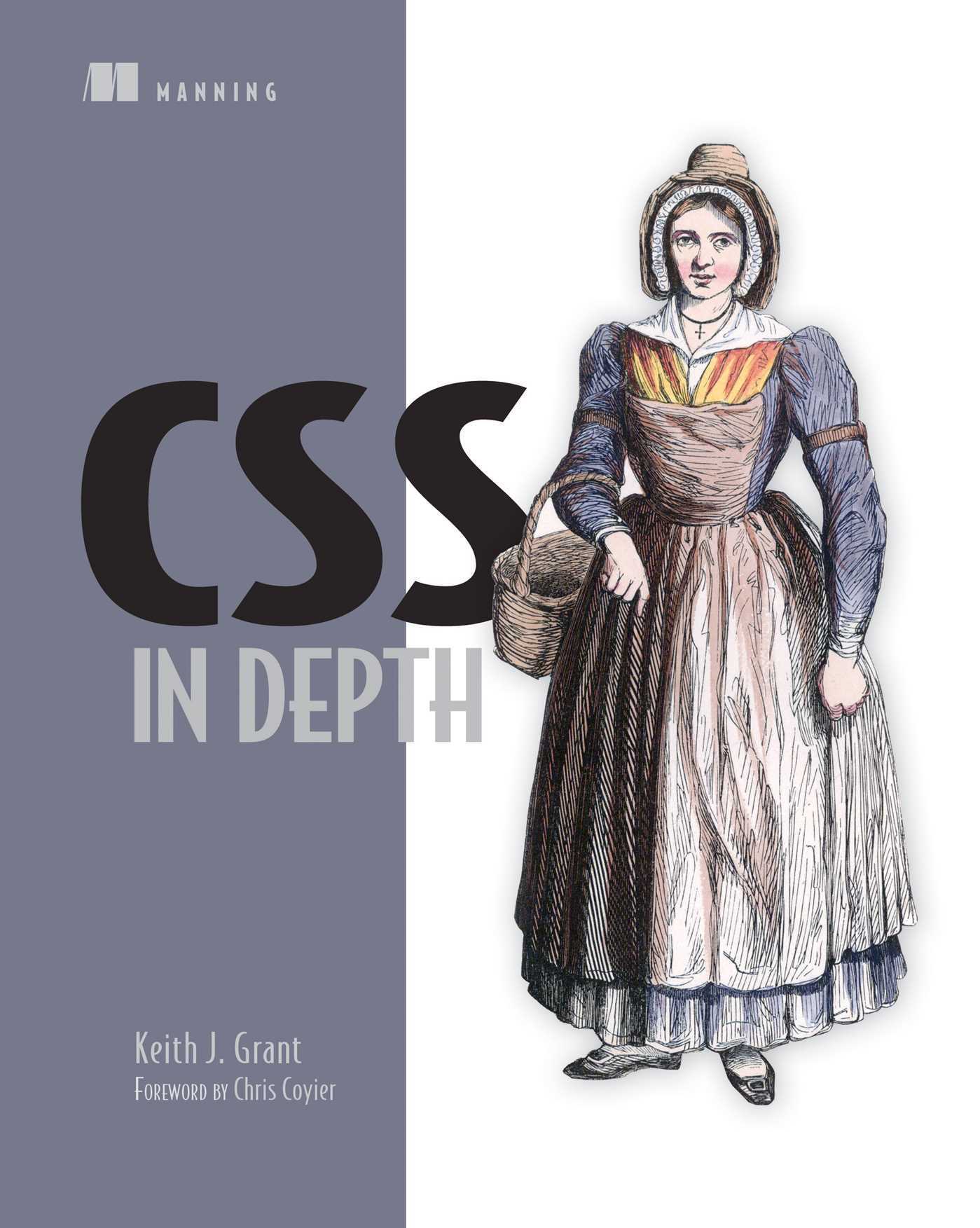AWS Cloud Computing Books
Confluent Data Streaming Revolution Comic

A captivating comic that will ignite the imagination of developers and technical architects interested in Kafka and event-driven architectures Shoe retail titan NewLimits relies on a jumble of homegrown ETL pipelines and batch-based data systems. As a result, sluggish and inefficient data transfers are frustrating internal teams and holding back the company’s development velocity and data quality. NewLimits developer Ada and architect Jax are eager to put the days of daily batch jobs, frequent failures, and inconsistent data sources behind them. When their lead unexpectedly assigns them a new project focused on developing real-time data streaming capabilities, Ada and Jax must decide, will they listen to the cautionary advice of senior developer Pat or embrace the unknown with their intrepid guide Iris?
Delta Lake Up and Running
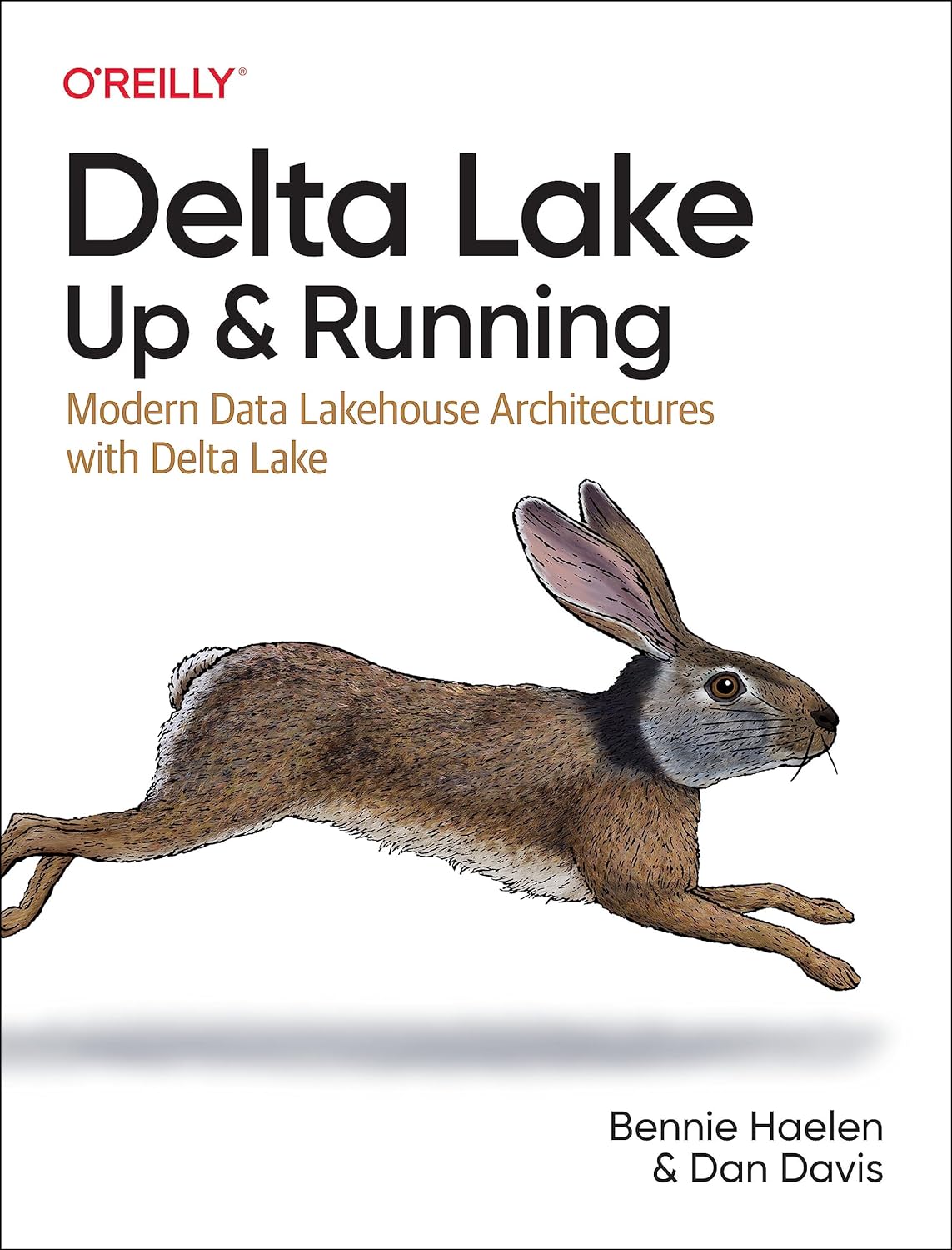
With the rapid growth of big data and AI, organizations are quickly building data products and solutions in an ad-hoc manner. But as these data organizations mature, it's apparent that their analysis and machine learning models are only as reliable as the data they're built upon. The solution? Delta Lake, an open-source format that enables building a lakehouse architecture on top of existing storage systems such as S3, ADLS, and GCS. In this practical book, author Bennie Haelen shows data engineers, data scientists, and data analysts how to get Delta Lake and its unique features up and running. The ultimate goal of building data pipelines and applications is to query processed data and gain insights from it. You'll learn how the choice of storage solution determines the robustness and performance of the data pipeline, from raw data to insights.
Serverless Analytics with Amazon Athena

This book begins with an overview of the serverless analytics experience offered by Athena and teaches you how to build and tune an S3 Data Lake using Athena, including how to structure your tables using open-source file formats like Parquet. You willl learn how to build, secure, and connect to a data lake with Athena and Lake Formation. Next, you will cover key tasks such as ad hoc data analysis, working with ETL pipelines, monitoring and alerting KPI breaches using CloudWatch Metrics, running customizable connectors with AWS Lambda, and more. Moving on, you will work through easy integrations, troubleshooting and tuning common Athena issues, and the most common reasons for query failure.You will also review tips to help diagnose and correct failing queries in your pursuit of operational excellence.Finally, you will explore advanced concepts such as Athena Query Federation and Athena ML to generate powerful insights without needing to touch a single server.
Serverless ETL and Analytics with AWS Glue
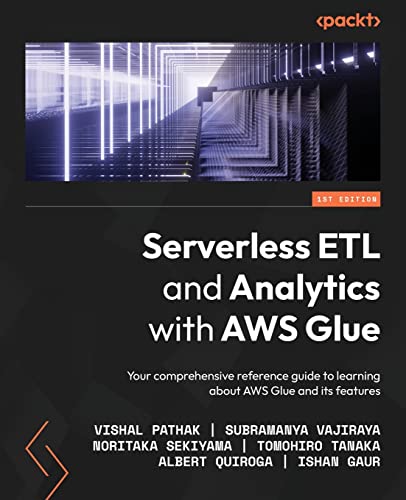
Beginning with AWS Glue basics, this book teaches you how to perform various aspects of data analysis such as ad hoc queries, data visualization, and real time analysis using this service. It also provides a walk-through of CI/CD for AWS Glue and how to shift left on quality using automated regression tests. You will find out how data security aspects such as access control, encryption, auditing, and networking are implemented, as well as getting to grips with useful techniques such as picking the right file format, compression, partitioning, and bucketing.As you advance, you will discover AWS Glue features such as crawlers, Lake Formation, governed tables, lineage, DataBrew, Glue Studio, and custom connectors. The concluding chapters help you to understand various performance tuning, troubleshooting, and monitoring options.
Simplify Big Data Analytics with Amazon EMR
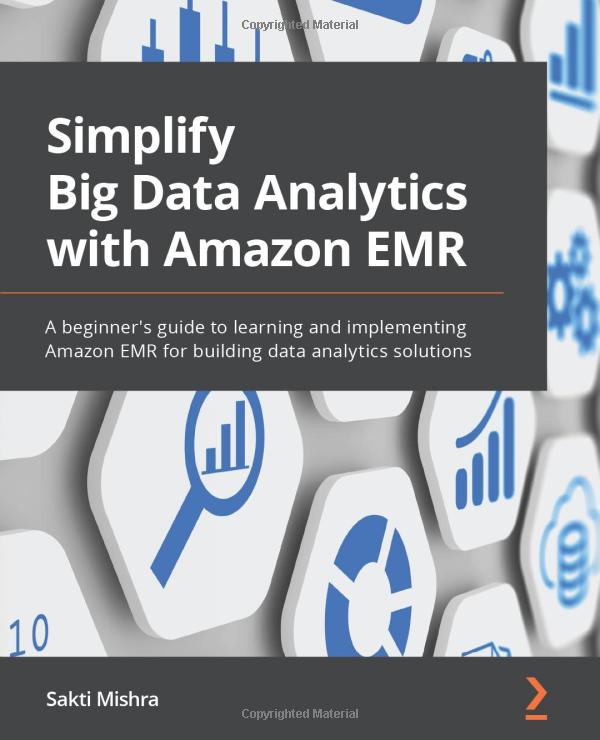
Amazon EMR, formerly Amazon Elastic MapReduce, provides a managed Hadoop cluster in Amazon Web Services (AWS) that you can use to implement batch or streaming data pipelines. By gaining expertise in Amazon EMR, you can design and implement data analytics pipelines with persistent or transient EMR clusters in AWS.This book is a practical guide to Amazon EMR for building data pipelines. You will start by understanding the Amazon EMR architecture, cluster nodes, features, and deployment options, along with their pricing. Next, the book covers the various big data applications that EMR supports. You will then focus on the advanced configuration of EMR applications, hardware, networking, security, troubleshooting, logging, and the different SDKs and APIs it provides. Later chapters will show you how to implement common Amazon EMR use cases, including batch ETL with Spark, real time streaming with Spark Streaming, and handling UPSERT in S3 Data Lake with Apache Hudi. Finally, you will orchestrate your EMR jobs and strategize on premises Hadoop cluster migration to EMR. In addition to this, you will explore best practices and cost optimization techniques while implementing your data analytics pipeline in EMR
Scalable Data Streaming with Amazon Kinesis
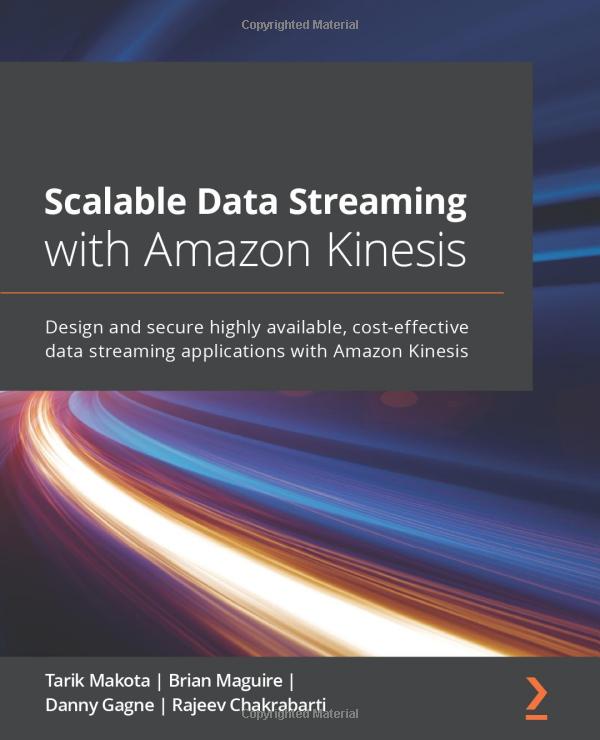
Amazon Kinesis is a collection of secure, serverless, durable, and highly available purpose built data streaming services. This data streaming service provides APIs and client SDKs that enable you to produce and consume data at scale. Scalable Data Streaming with Amazon Kinesis begins with a quick overview of the core concepts of data streams, along with the essentials of the AWS Kinesis landscape. You will then explore the requirements of the use case shown through the book to help you get started and cover the key pain points encountered in the data stream life cycle. As you advance, you will get to grips with the architectural components of Kinesis, understand how they are configured to build data pipelines, and delve into the applications that connect to them for consumption and processing. You will also build a Kinesis data pipeline from scratch and learn how to implement and apply practical solutions. Moving on, you will learn how to configure Kinesis on a cloud platform. Finally, you will learn how other AWS services can be integrated into Kinesis. These services include Redshift, Dynamo Database, AWS S3, Elastic Search, and third-party applications such as Splunk.
Actionable Insights with Amazon QuickSight

Amazon Quicksight is an exciting new visualization that rivals PowerBI and Tableau, bringing several exciting features to the table but sadly, there are not many resources out there that can help you learn the ropes. This book seeks to remedy that with the help of an AWS certified expert who will help you leverage its full capabilities. After learning QuickSight is fundamental concepts and how to configure data sources, you will be introduced to the main analysis-building functionality of QuickSight to develop visuals and dashboards, and explore how to develop and share interactive dashboards with parameters and on screen controls. You will dive into advanced filtering options with URL actions before learning how to set up alerts and scheduled reports.
Amazon Redshift Cookbook
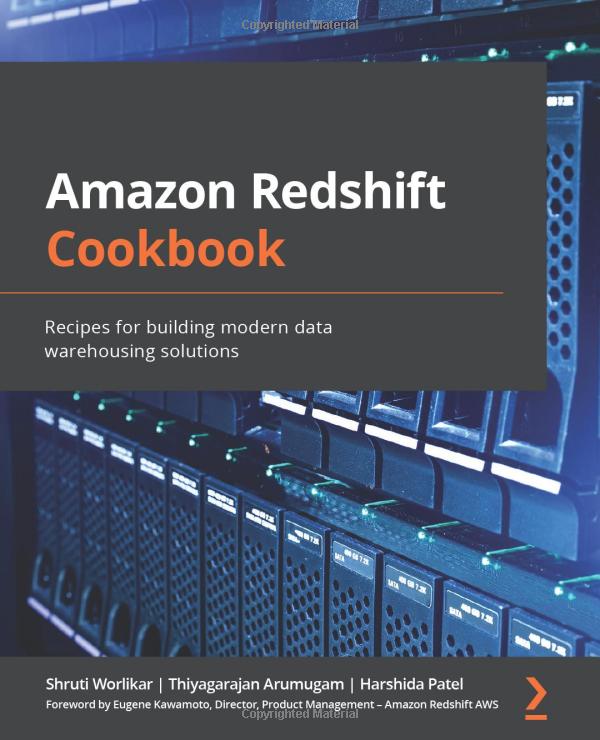
Amazon Redshift is a fully managed, petabyte-scale AWS cloud data warehousing service. It enables you to build new data warehouse workloads on AWS and migrate on-premises traditional data warehousing platforms to Redshift. This book on Amazon Redshift starts by focusing on Redshift architecture, showing you how to perform database administration tasks on Redshift.You will then learn how to optimize your data warehouse to quickly execute complex analytic queries against very large datasets. Because of the massive amount of data involved in data warehousing, designing your database for analytical processing lets you take full advantage of Redshifts columnar architecture and managed services.As you advance, you will discover how to deploy fully automated and highly scalable extract, transform, and load (ETL) processes, which help minimize the operational efforts that you have to invest in managing regular ETL pipelines and ensure the timely and accurate refreshing of your data warehouse. Finally, you will gain a clear understanding of Redshift use cases, data ingestion, data management, security, and scaling so that you can build a scalable data warehouse platform.
Automated Machine Learning on AWS
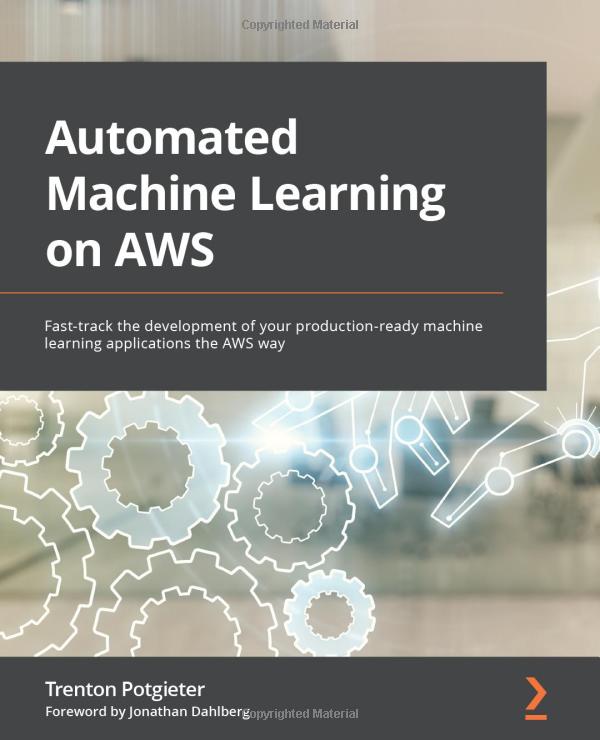
Automated Machine Learning on AWS begins with a quick overview of what the machine learning pipeline/process looks like and highlights the typical challenges that you may face when building a pipeline. Throughout the book, you'll become well versed with various AWS solutions such as Amazon SageMaker Autopilot, AutoGluon, and AWS Step Functions to automate an end-to-end ML process with the help of hands-on examples. The book will show you how to build, monitor, and execute a CI/CD pipeline for the ML process and how the various CI/CD services within AWS can be applied to a use case with the Cloud Development Kit (CDK). You'll understand what a data-centric ML process is by working with the Amazon Managed Services for Apache Airflow and then build a managed Airflow environment. You'll also cover the key success criteria for an MLSDLC implementation and the process of creating a self-mutating CI/CD pipeline using AWS CDK from the perspective of the platform engineering team
Kubernetes Up and Running
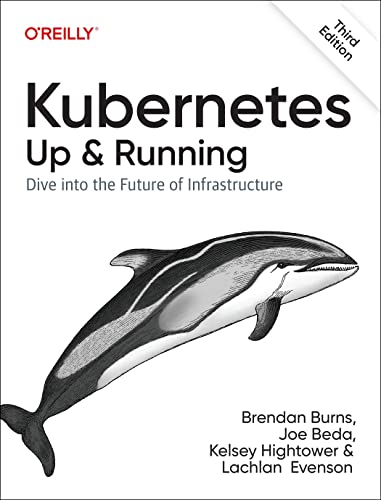
In just five years, Kubernetes has radically changed the way developers and ops personnel build, deploy, and maintain applications in the cloud. With this book is updated third edition, you will learn how this popular container orchestrator can help your company achieve new levels of velocity, agility, reliability, and efficiency whether you are new to distributed systems or have been deploying cloud native apps for some time.
Getting Started with Containerization

Kubernetes is an open source orchestration platform for managing containers in a cluster environment. This Learning Path introduces you to the world of containerization, in addition to providing you with an overview of Docker fundamentals. As you progress, you will be able to understand how Kubernetes works with containers. Starting with creating Kubernetes clusters and running applications with proper authentication and authorization, you will learn how to create high- availability Kubernetes clusters on Amazon Web Services(AWS), and also learn how to use kubeconfig to manage different clusters.Whether it is learning about Docker containers and Docker Compose, or building a continuous delivery pipeline for your application, this Learning Path will equip you with all the right tools and techniques to get started with containerization.
Production Kubernetes

Kubernetes has become the dominant container orchestrator, but many organizations that have recently adopted this system are still struggling to run actual production workloads. In this practical book, four software engineers from VMware bring their shared experiences running Kubernetes in production and provide insight on key challenges and best practices. The brilliance of Kubernetes is how configurable and extensible the system is, from pluggable runtimes to storage integrations. For platform engineers, software developers, infosec, network engineers, storage engineers, and others, this book examines how the path to success with Kubernetes involves a variety of technology, pattern, and abstraction considerations.
Practical Vim
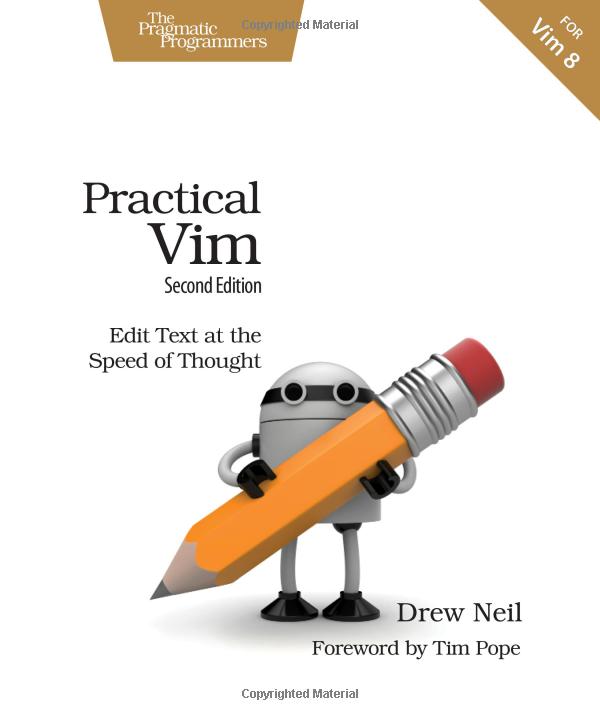
Vim is a fast and efficient text editor that will make you a faster and more efficient developer. It's available on almost every OS, and if you master the techniques in this book, you will never need another text editor. In more than 120 Vim tips, you will quickly learn the editor's core functionality and tackle your trickiest editing and writing tasks. This beloved bestseller has been revised and updated to Vim 8 and includes three brand-new tips and five fully revised tips.
Effective Typescript
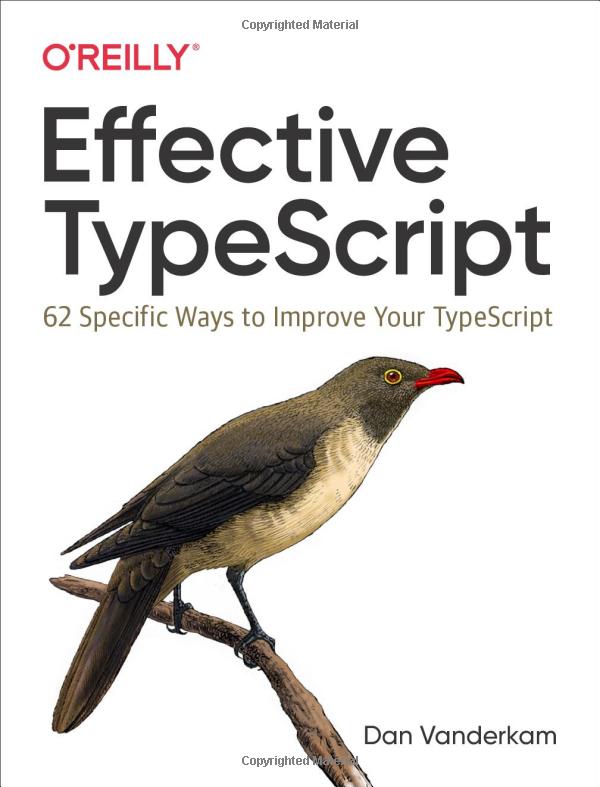
TypeScript is a typed superset of JavaScript with the potential to solve many of the headaches for which JavaScript is famous. But TypeScript has a learning curve of its own, and understanding how to use it effectively can take time. This book guides you through 62 specific ways to improve your use of TypeScript
Unix and Linux System Administration Handbook
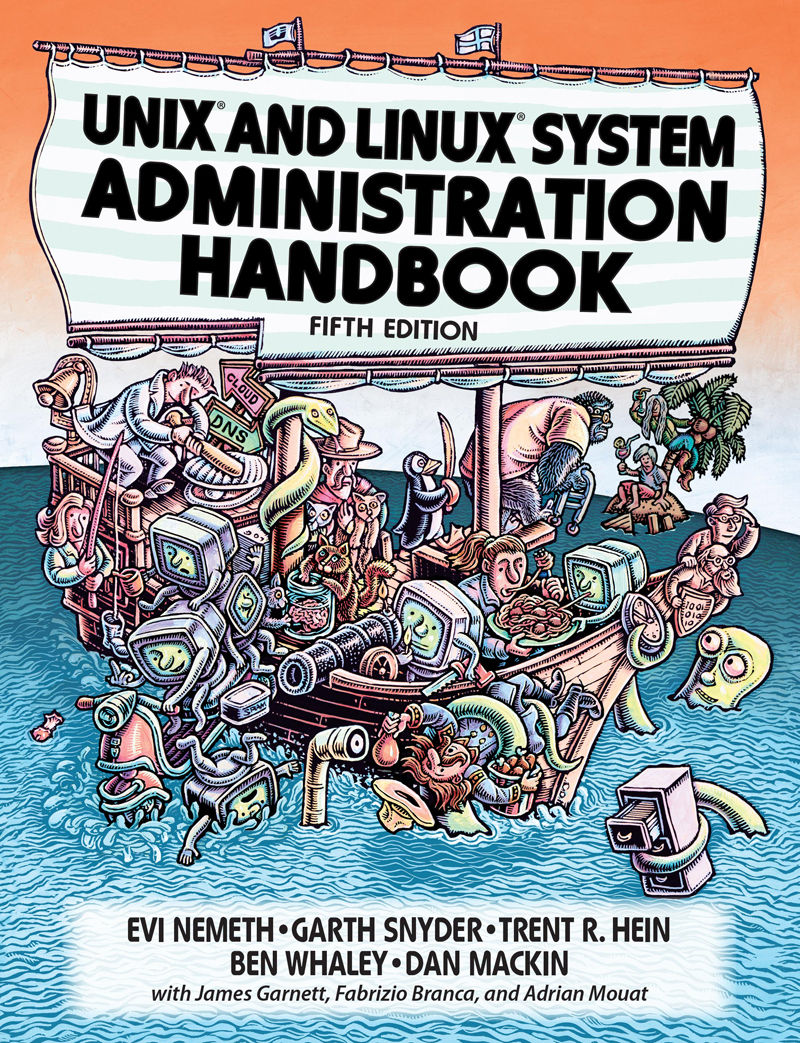
UNIX and Linux System Administration Handbook, Fifth Edition, is today definitive guide to installing, configuring, and maintaining any UNIX or Linux system, including systems that supply core Internet and cloud infrastructure. Updated for new distributions and cloud environments, this comprehensive guide covers best practices for every facet of system administration, including storage management, network design and administration, security, web hosting, automation, configuration management, performance analysis, virtualization, DNS, security, and the management of IT service organizations. The authors―world-class, hands-on technologists―offer indispensable new coverage of cloud platforms, the DevOps philosophy, continuous deployment, containerization, monitoring, and many other essential topics.Whatever your role in running systems and networks built on UNIX or Linux, this conversational, well-written ¿guide will improve your efficiency and help solve your knottiest problems.
Computer Organization and Design
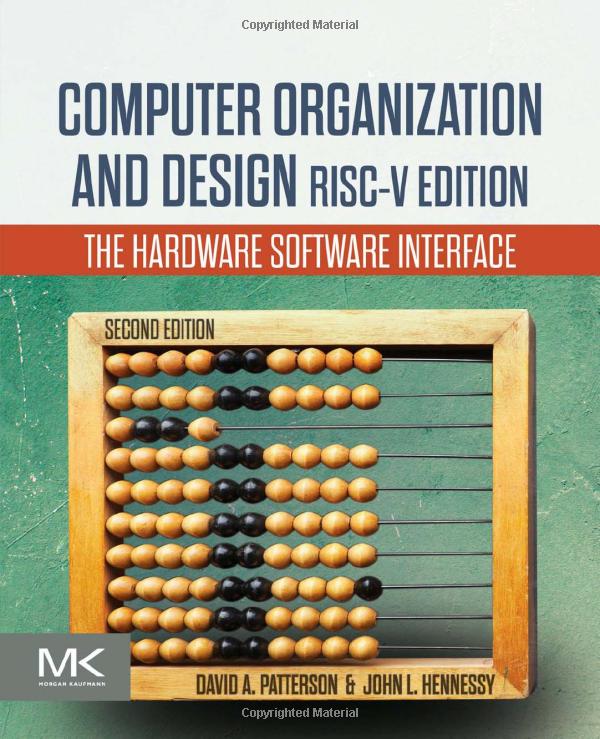
Computer Organization and Design, Fifth Edition, is the latest update to the classic introduction to computer organization. The text now contains new examples and material highlighting the emergence of mobile computing and the cloud. It explores this generational change with updated content featuring tablet computers, cloud infrastructure, and the ARM (mobile computing devices) and x86 (cloud computing) architectures. The book uses a MIPS processor core to present the fundamentals of hardware technologies, assembly language, computer arithmetic, pipelining, memory hierarchies and I/Because an understanding of modern hardware is essential to achieving good performance and energy efficiency, this edition adds a new concrete example, Going Faster, used throughout the text to demonstrate extremely effective optimization techniques. There is also a new discussion of the Eight Great Ideas of computer architecture. Parallelism is examined in depth with examples and content highlighting parallel hardware and software topics. The book features the Intel Core i7, ARM Cortex A8 and NVIDIA Fermi GPU as real world examples, along with a full set of updated and improved exercises.
Database Systems The Complete Book

Database Systems: The Complete Book is ideal for Database Systems and Database Design and Application courses offered at the junior, senior and graduate levels in Computer Science departments. A basic understanding of algebraic expressions and laws, logic, basic data structure, OOP concepts, and programming environments is implied. Written by well-known computer scientists, this introduction to database systems offers a comprehensive approach, focusing on database design, database use, and implementation of database applications and database management systems.
Real World Next.js

Next.js is a scalable and high-performance React.js framework for modern web development and provides a large set of features, such as hybrid rendering, route prefetching, automatic image optimization, and internationalization, out of the box. If you are looking to create a blog, an e-commerce website, or a simple website, this book will show you how you can use the multipurpose Next.js framework to create an impressive user experience
Scalable Streaming Processing with Kinesis
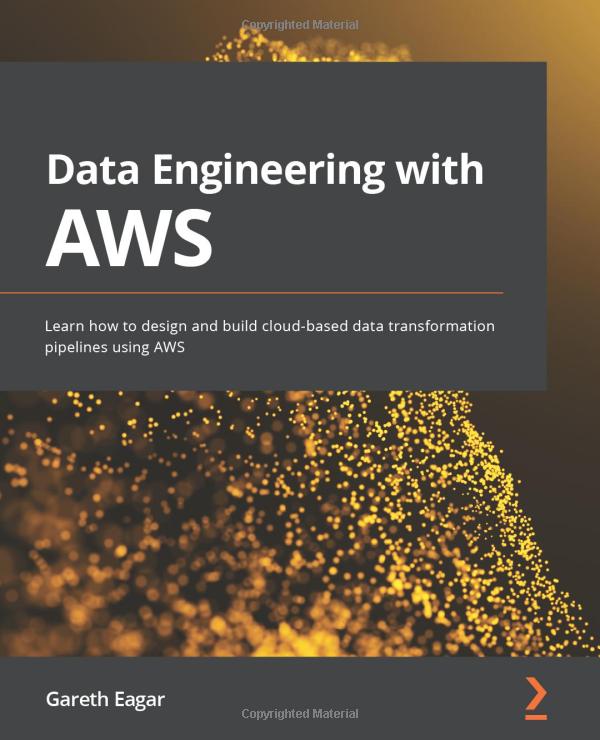
Scalable Data Streaming with Amazon Kinesis begins with a quick overview of the core concepts of data streams, along with the essentials of the AWS Kinesis landscape. You'll then explore the requirements of the use case shown through the book to help you get started and cover the key pain points encountered in the data stream life cycle. As you advance, you'll get to grips with the architectural components of Kinesis, understand how they are configured to build data pipelines, and delve into the applications that connect to them for consumption and processing. You'll also build a Kinesis data pipeline from scratch and learn how to implement and apply practical solutions. Moving on, you'll learn how to configure Kinesis on a cloud platform. Finally, you’ll learn how other AWS services can be integrated into Kinesis. These services include Redshift, Dynamo Database, AWS S3, Elastic Search, and third-party applications such as Splunk.
Kafka The Definitive Guide 2022

very enterprise application creates data, whether it consists of log messages, metrics, user activity, or outgoing messages. Moving all this data is just as important as the data itself. With this updated edition, application architects, developers, and production engineers new to the Kafka streaming platform will learn how to handle data in motion. Additional chapters cover Kafka's AdminClient API, transactions, new security features, and tooling changes.
React Key Concepts
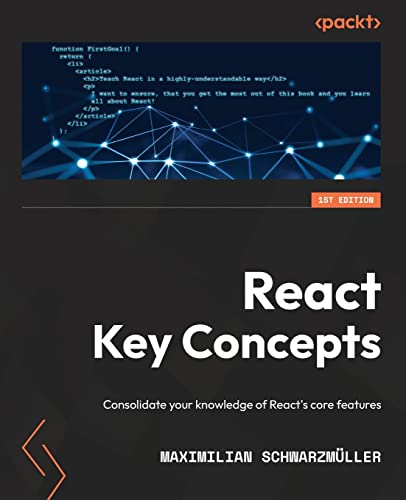
As the most popular JavaScript library for building modern, interactive user interfaces, React is an in-demand framework that'll bring real value to your career or next project. But like any technology, learning React can be tricky, and finding the right teacher can make things a whole lot easier.
Mastering EKS on AWS

Kubernetes has emerged as the de facto standard for container orchestration, with recent developments making it easy to deploy and handle a Kubernetes cluster. However, a few challenges such as networking, load balancing, monitoring, and security remain. To address these issues, Amazon EKS offers a managed Kubernetes service to improve the performance, scalability, reliability, and availability of AWS infrastructure and integrate with AWS networking and security services with ease. You'll begin by exploring the fundamentals of Docker, Kubernetes, Amazon EKS, and its architecture along with different ways to set up EKS. Next, you'll find out how to manage Amazon EKS, encompassing security, cluster authentication, networking, and cluster version upgrades. As you advance, you'll discover best practices and learn to deploy applications on Amazon EKS through different use cases, including pushing images to ECR and setting up storage and load balancing. With the help of several actionable practices and scenarios, you'll gain the know-how to resolve scaling and monitoring issues. Finally, you will overcome the challenges in EKS by developing the right skill set to troubleshoot common issues with the right logic.By the end of this Kubernetes book, you'll be able to effectively manage your own Kubernetes clusters and other components on AWS.
Transformers for NLP
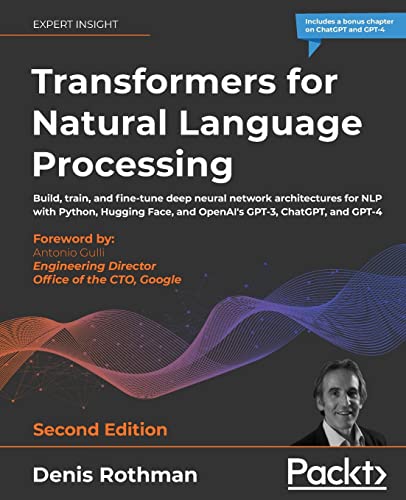
Transformers for Natural Language Processing, 2nd Edition, guides you through the world of transformers, highlighting the strengths of different models and platforms, while teaching you the problem-solving skills you need to tackle model weaknesses. You'll use Hugging Face to pretrain a RoBERTa model from scratch, from building the dataset to defining the data collator to training the model. If you're looking to fine-tune a pretrained model, including GPT-3, then Transformers for Natural Language Processing, 2nd Edition, shows you how with step-by-step guides. The book investigates machine translations, speech-to-text, text-to-speech, question-answering, and many more NLP tasks. It provides techniques to solve hard language problems and may even help with fake news anxiety (read chapter 13 for more details). You'll see how cutting-edge platforms, such as OpenAI, have taken transformers beyond language into computer vision tasks and code creation using DALL-E 2, ChatGPT, and GPT-4.
Prometheus Up and Running
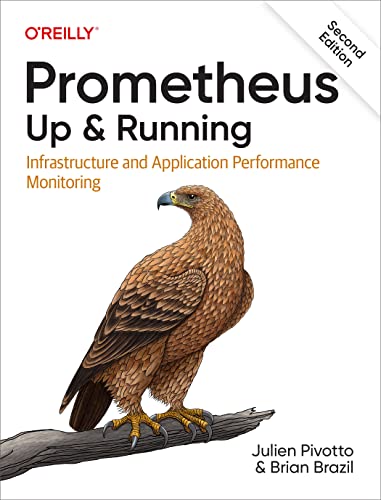
Get up to speed with Prometheus, the metrics-based monitoring system used in production by tens of thousands of organizations. This updated second edition provides site reliability engineers, Kubernetes administrators, and software developers with a hands-on introduction to the most important aspects of Prometheus, including dashboarding and alerting, direct code instrumentation, and metric collection from third-party systems with exporters.Prometheus server maintainer Julien Pivotto and core developer Brian Brazil demonstrate how you can use Prometheus for application and infrastructure monitoring. This book guides you through Prometheus setup, the Node Exporter, and the Alertmanager, and then shows you how to use these tools for application and infrastructure monitoring. You'll understand why this open source system has continued to gain popularity in recent years.
Enterprise Data Warehousing on AWS
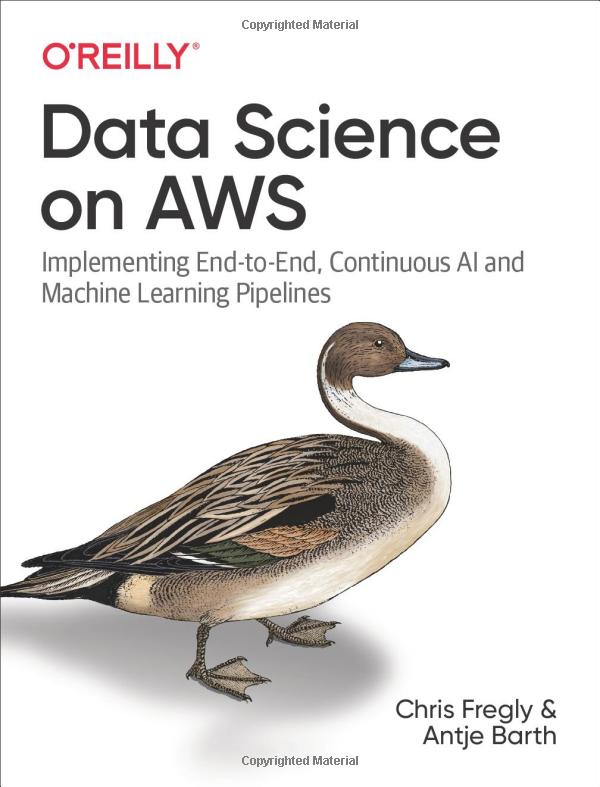
Data is an enterprise’s most valuable asset. To fuel innovation, which fuels growth, an enterprise must:Store every relevant data point about their business, Give data access to everyone who needs it, Have the ability to analyze the data in different ways, Distill the data down to insights. Most large enterprises have data warehouses for reporting and analytics purposes. They use data from a variety of sources, including their own transaction processing systems, and other databases. In the past, building and running a data warehouse—a central repository of information coming from one or more data sources—was complicated and expensive. Data warehousing systems were complex to set up, cost millions of dollars in upfront software and hardware expenses, and took months of planning, procurement, implementation, and deployment processes. After making the initial investments and setting up the data warehouse, enterprises had to hire a team of database administrators to keep their queries running fast and protect against data loss.
Learning React
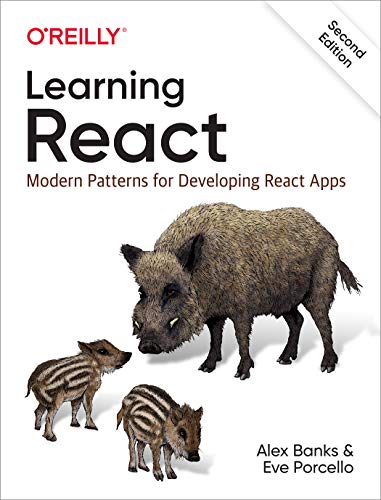
If you want to learn how to build efficient React applications, this is your book. Ideal for web developers and software engineers who understand how JavaScript, CSS, and HTML work in the browser, this updated edition provides best practices and patterns for writing modern React code. No prior knowledge of React or functional JavaScript is necessary. With their learning road map, authors Alex Banks and Eve Porcello show you how to create UIs that can deftly display changes without page reloads on large-scale, data-driven websites. You’ll also discover how to work with functional programming and the latest ECMAScript features. Once you learn how to build React components with this hands-on guide, you’ll understand just how useful React can be in your organization.
Amazon Sagemaker Best Pratice
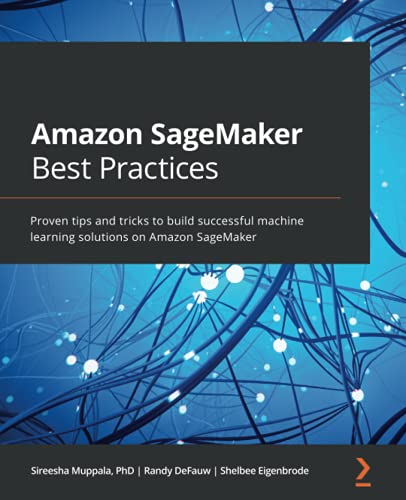
Amazon SageMaker is a fully managed AWS service that provides the ability to build, train, deploy, and monitor machine learning models. The book begins with a high-level overview of Amazon SageMaker capabilities that map to the various phases of the machine learning process to help set the right foundation. You'll learn efficient tactics to address data science challenges such as processing data at scale, data preparation, connecting to big data pipelines, identifying data bias, running A/B tests, and model explainability using Amazon SageMaker. As you advance, you'll understand how you can tackle the challenge of training at scale, including how to use large data sets while saving costs, monitoring training resources to identify bottlenecks, speeding up long training jobs, and tracking multiple models trained for a common goal. Moving ahead, you'll find out how you can integrate Amazon SageMaker with other AWS to build reliable, cost-optimized, and automated machine learning applications. In addition to this, you'll build ML pipelines integrated with MLOps principles and apply best practices to build secure and performant solutions.
The Kubernetes Book
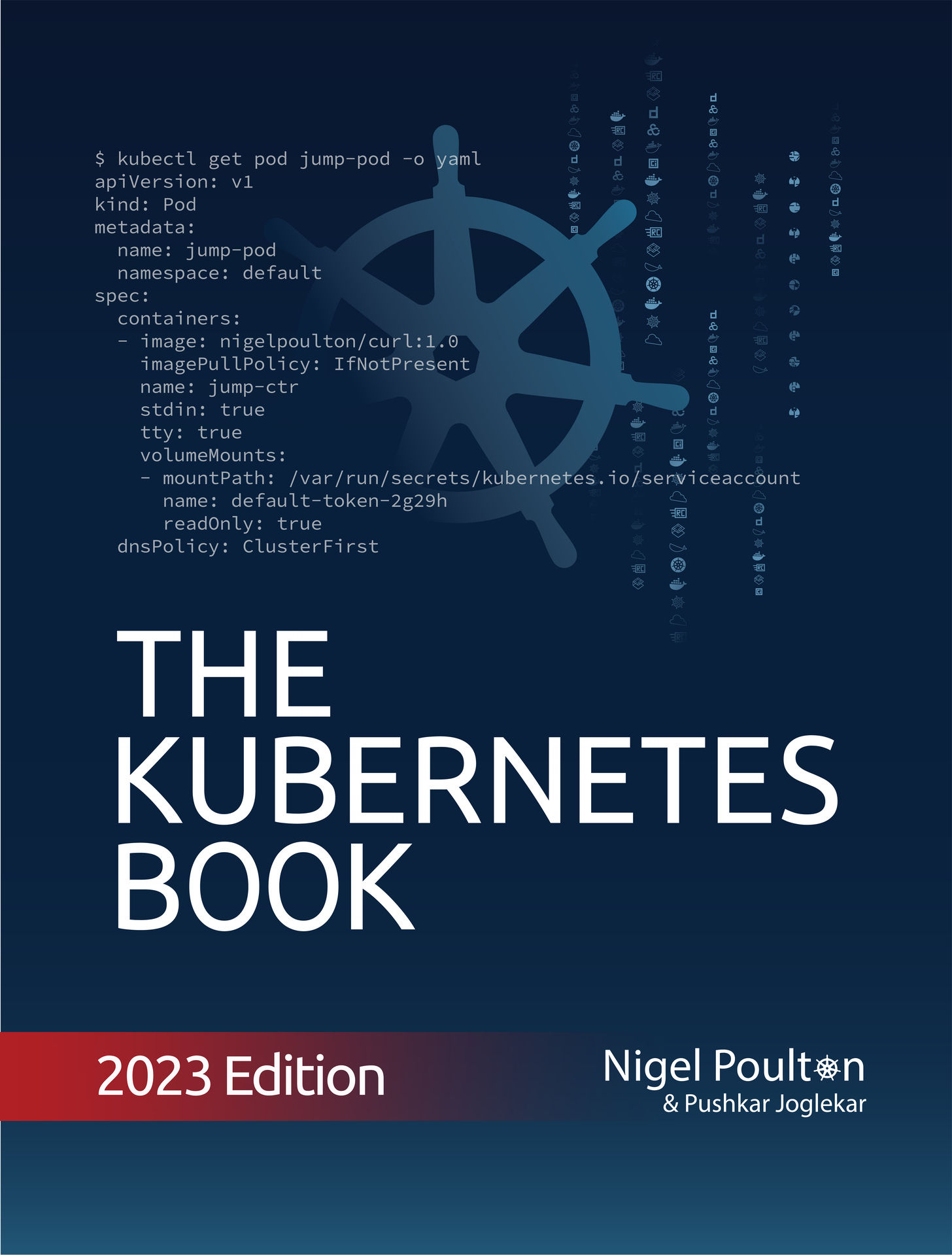
Containers transformed how we package and deploy applications, but they came with inherent challenges. Kubernetes is a platform for deploying and managing containerised applications at scale. It also abstracts underlying infrastructure, making it easier to deploy and manage applications across heterogenous clouds and on-premises environments. The Kubernetes Book offers a beginner-friendly approach to mastering Kubernetes architecture and core concepts such as Pods, Deployments, Services, StatefulSets, Ingress, ConfigMaps, and more. It also demystifies the Kubernetes API, teaches you how to secure Kubernetes, and brings you up to speed with important cloud-native concepts such as microservices, declarative configuration, desired state, reconciliation, and more.
Kubernetes DevOps

Kubernetes is a trending topic among engineers, CTOs, CIOs, and other technically sound professionals. Due to its proliferation and importance for all cloud technologies, DevOps engineers nowadays need a solid grasp of key Kubernetes concepts to help their organization thrive. This book equips you with all the requisite information about how Kubernetes works and how to use it for the best results. You'll learn everything from why cloud native is important to implementing Kubernetes clusters to deploying applications in production. This book takes you on a learning journey, starting from what cloud native is and how to get started with Kubernetes in the cloud, on-premises, and PaaS environments such as OpenShift. Next, you'll learn about deploying applications in many ways, including Deployment specs, Ingress Specs, and StatefulSet specs. Finally, you'll be comfortable working with Kubernetes monitoring, observability, and security. Each chapter of 50 Kubernetes Concepts Every DevOps Engineer Should Know is built upon the previous chapter, ensuring that you develop practical skills as you work through the code examples in GitHub, allowing you to follow along while giving you practical knowledge.
Data Engineering with AWS

This is a great book for understanding and implementing the lake house architecture to integrate your Data Lake with your warehouse. It shows you all the steps you need to orchestrate your data pipeline. From architecture, ingestion, and processing to running queries in your data warehouse, I really like the very hands-on approach that shows you how you can immediately implement the topics in your AWS account Andreas Kretz, CEO, Learn Data Engineering
Data Science on AWS

With this practical book, AI and machine learning practitioners will learn how to successfully build and deploy data science projects on Amazon Web Services. The Amazon AI and machine learning stack unifies data science, data engineering, and application development to help level up your skills. This guide shows you how to build and run pipelines in the cloud, then integrate the results into applications in minutes instead of days. Throughout the book, authors Chris Fregly and Antje Barth demonstrate how to reduce cost and improve performance.
Hands-on Machine Learning
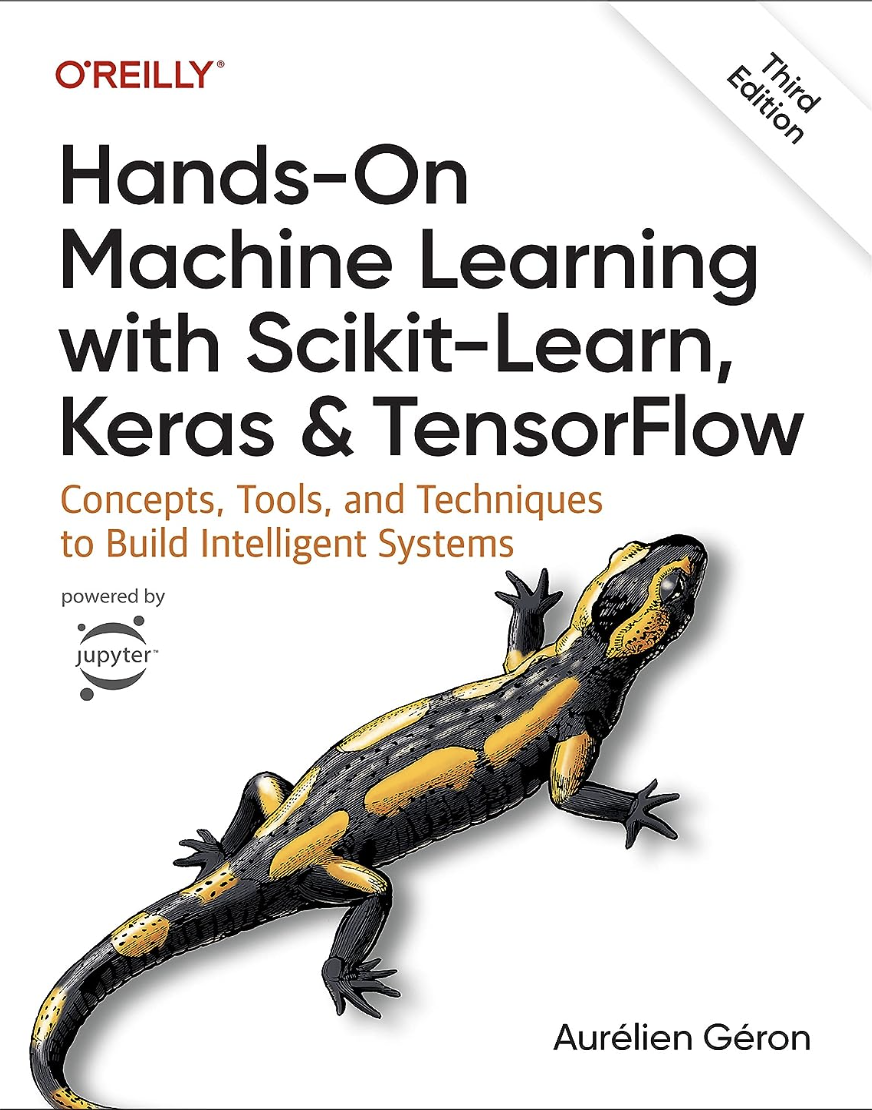
Through a recent series of breakthroughs, deep learning has boosted the entire field of machine learning. Now, even programmers who know close to nothing about this technology can use simple, efficient tools to implement programs capable of learning from data. This bestselling book uses concrete examples, minimal theory, and production-ready Python frameworks (Scikit-Learn, Keras, and TensorFlow) to help you gain an intuitive understanding of the concepts and tools for building intelligent systems. With this updated third edition, author Aurélien Géron explores a range of techniques, starting with simple linear regression and progressing to deep neural networks. Numerous code examples and exercises throughout the book help you apply what you've learned. Programming experience is all you need to get started. Use Scikit-learn to track an example ML project end to end Explore several models, including support vector machines, decision trees, random forests, and ensemble methods Exploit unsupervised learning techniques such as dimensionality reduction, clustering, and anomaly detection Dive into neural net architectures, including convolutional nets, recurrent nets, generative adversarial networks, autoencoders, diffusion models, and transformers Use TensorFlow and Keras to build and train neural nets for computer vision, natural language processing, generative models, and deep reinforcement learning
Delta Lake Definitive Guide
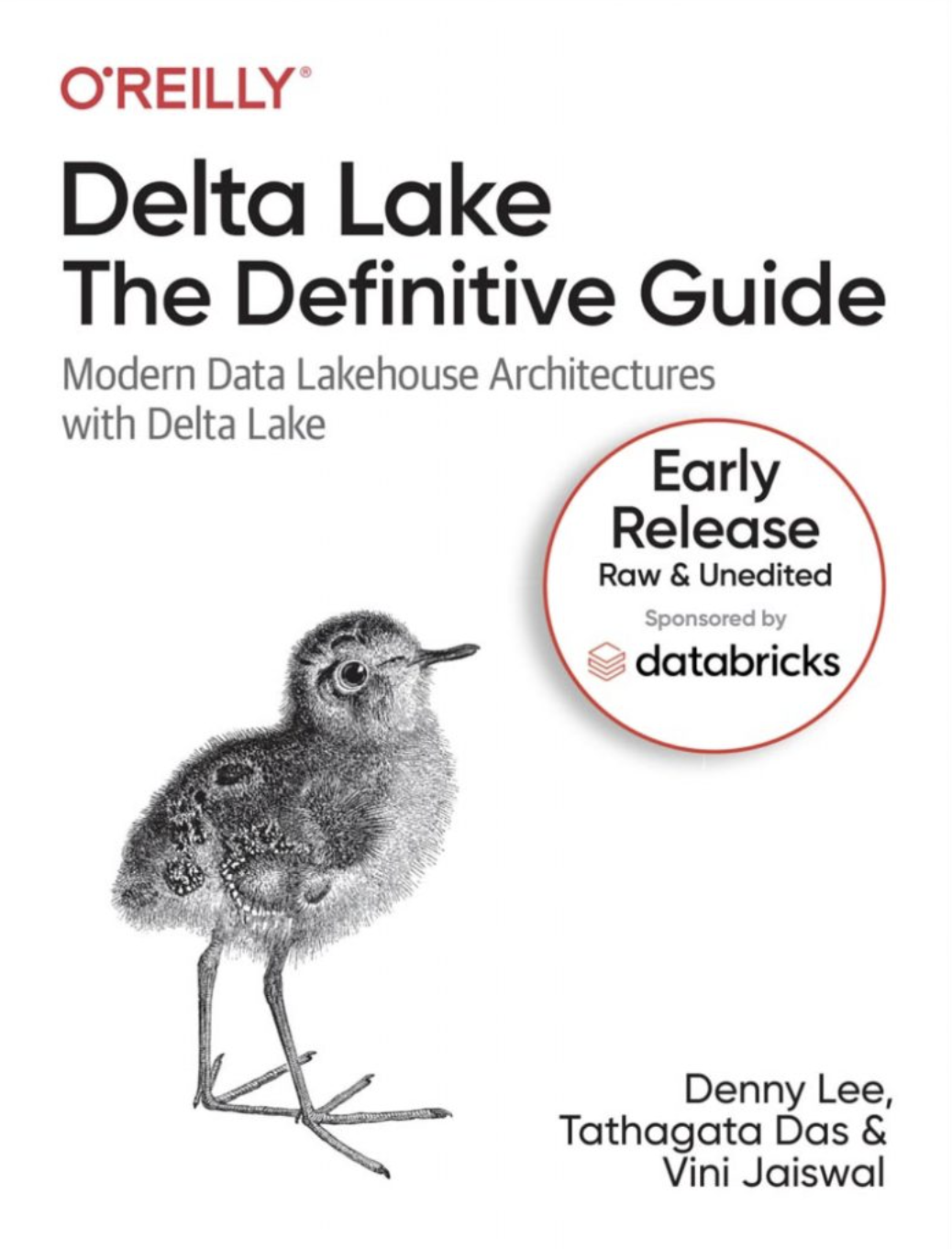
Delta Lake The Definitive Guide includes two chapters that will help you use and optimize Delta Lake, the open source storage format that enables you to create modern data lakehouse architectures. The first chapter describes Delta Lake maintenance fundamentals and explains best practices for optimizing and tuning Delta tables. The second chapter explores how to use Delta Lake for data streaming scenarios including change data capture. Download the preview to get practical guidance on creating and working with Delta tables
Kubernetes Security and observability
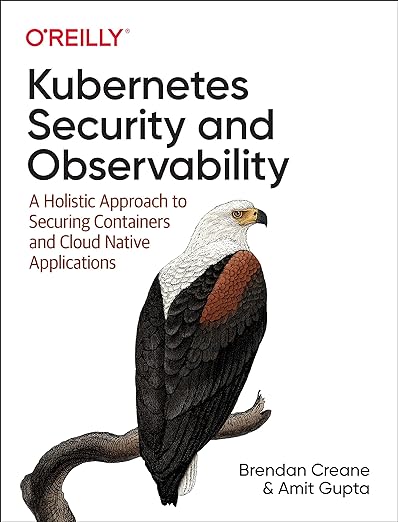
Delta Lake The Definitive Guide includes two chapters that will help you use and optimize Delta Lake, the open source storage format that enables you to create modern data lakehouse architectures. The first chapter describes Delta Lake maintenance fundamentals and explains best practices for optimizing and tuning Delta tables. The second chapter explores how to use Delta Lake for data streaming scenarios including change data capture. Download the preview to get practical guidance on creating and working with Delta tables
Infrastructure Monitoring with Amazon CloudWatch
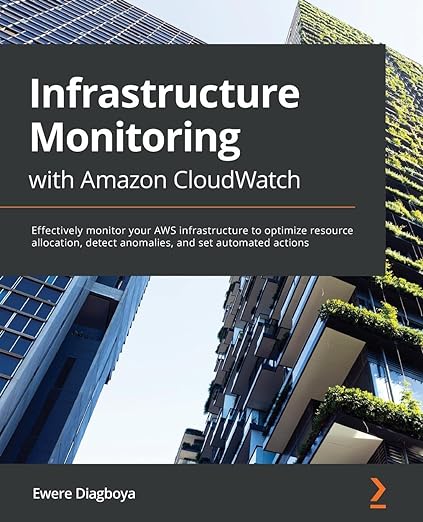
Delta Lake The Definitive Guide includes two chapters that will help you use and optimize Delta Lake, the open source storage format that enables you to create modern data lakehouse architectures. The first chapter describes Delta Lake maintenance fundamentals and explains best practices for optimizing and tuning Delta tables. The second chapter explores how to use Delta Lake for data streaming scenarios including change data capture. Download the preview to get practical guidance on creating and working with Delta tables
Data Engineering with AWS Second Edition
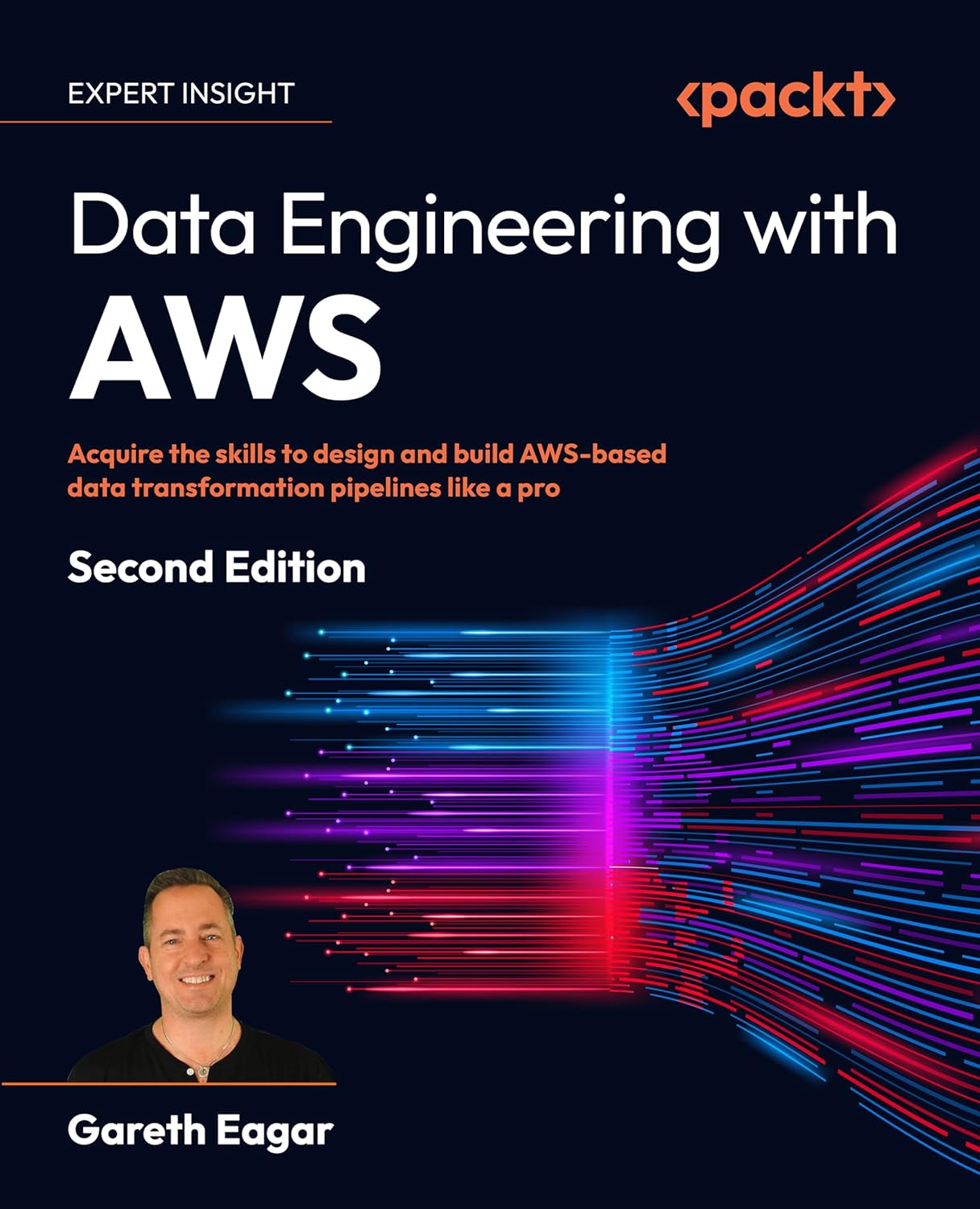
Delta Lake The Definitive Guide includes two chapters that will help you use and optimize Delta Lake, the open source storage format that enables you to create modern data lakehouse architectures. The first chapter describes Delta Lake maintenance fundamentals and explains best practices for optimizing and tuning Delta tables. The second chapter explores how to use Delta Lake for data streaming scenarios including change data capture. Download the preview to get practical guidance on creating and working with Delta tables
Natural Language Processing with Transformers
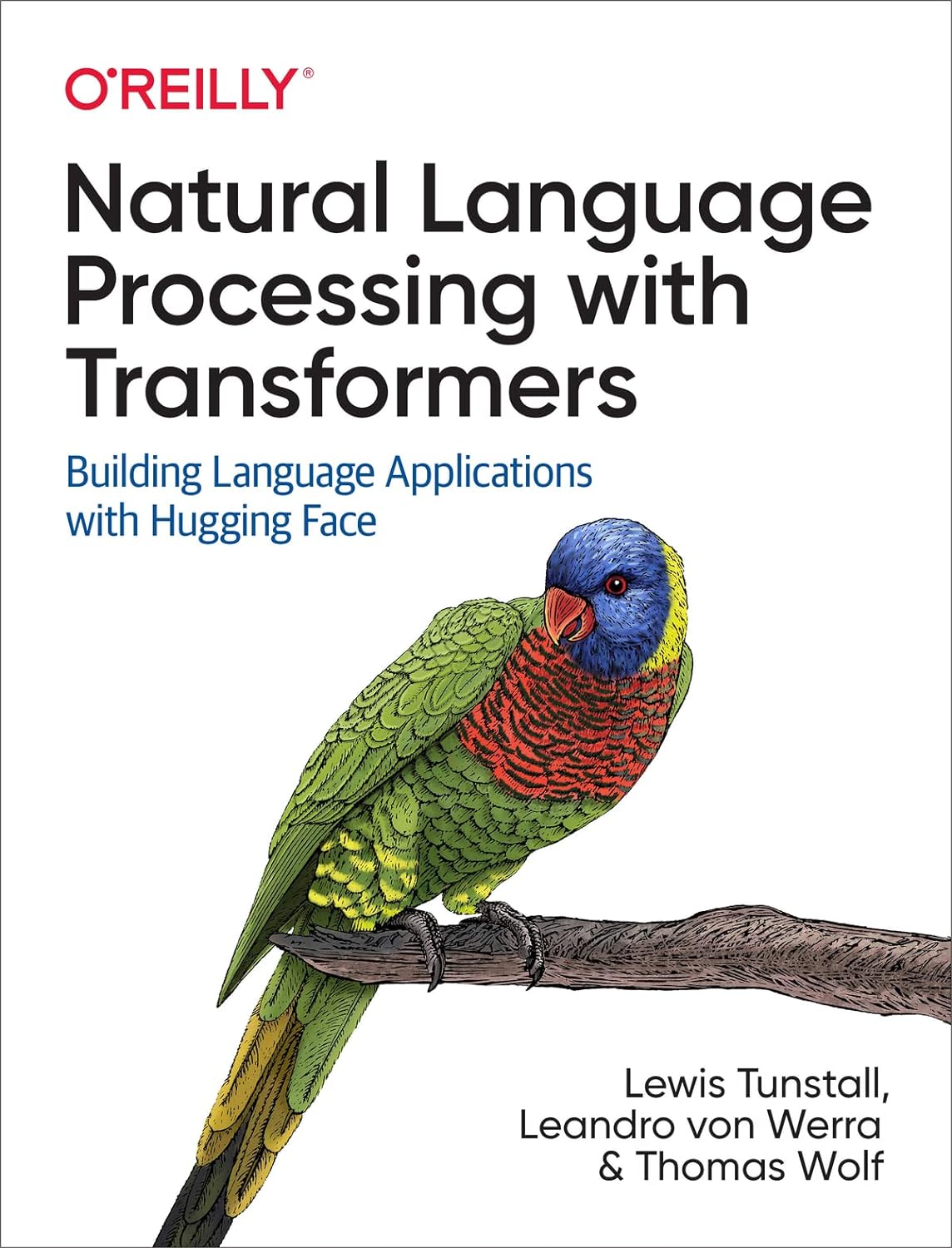
This practical book shows you how to train and scale these large models using HuggingFace Transformers, a Python-based deep learning library. The authors among the creators of Hugging Face Transformers, use a hands-on approach to teach you how transformers work and how to integrate them in your applications.
Deep Learning with Pytorch

Deep Learning with PyTorch teaches you to create deep learning and neural network systems with PyTorch. This practical book gets you to work right away building a tumor image classifier from scratch. After covering the basics, you’ll learn best practices for the entire deep learning pipeline, tackling advanced projects as your PyTorch skills become more sophisticated. All code samples are easy to explore in downloadable Jupyter notebooks.
Gen AI on AWS

Companies today are moving rapidly to integrate generative AI into their products and services. But there's a great deal of hype (and misunderstanding) about the impact and promise of this technology. With this book, Chris Fregly, Antje Barth, and Shelbee Eigenbrode from AWS help CTOs, ML practitioners, application developers, business analysts, data engineers, and data scientists find practical ways to use this exciting new technology.
Git Bottom Up

In my pursuit to understand Git, it’s been helpful for me to understand it from the bottom up — rather than look at it only in terms of its high-level commands. And since Git is so beauti- fully simple when viewed this way, I thought others might be interested to read what I’ve found, and perhaps avoid the pain I went through finding it.
Pro Git
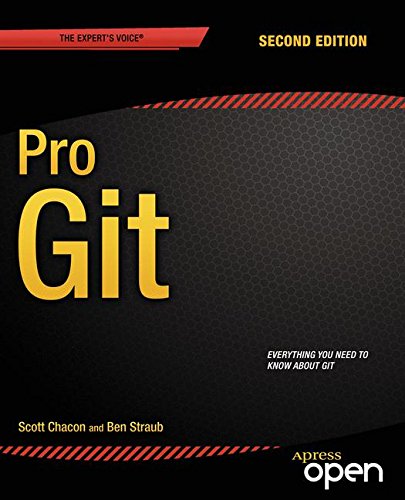
Pro Git (Second Edition) is your fully-updated guide to Git and its usage in the modern world. Git has come a long way since it was first developed by Linus Torvalds for Linux kernel development. It has taken the open source world by storm since its inception in 2005, and this book teaches you how to use it like a pro. Effective and well-implemented version control is a necessity for successful web projects, whether large or small. With this book you’ll learn how to master the world of distributed version workflow, use the distributed features of Git to the full, and extend Git to meet your every need.
Data Governance
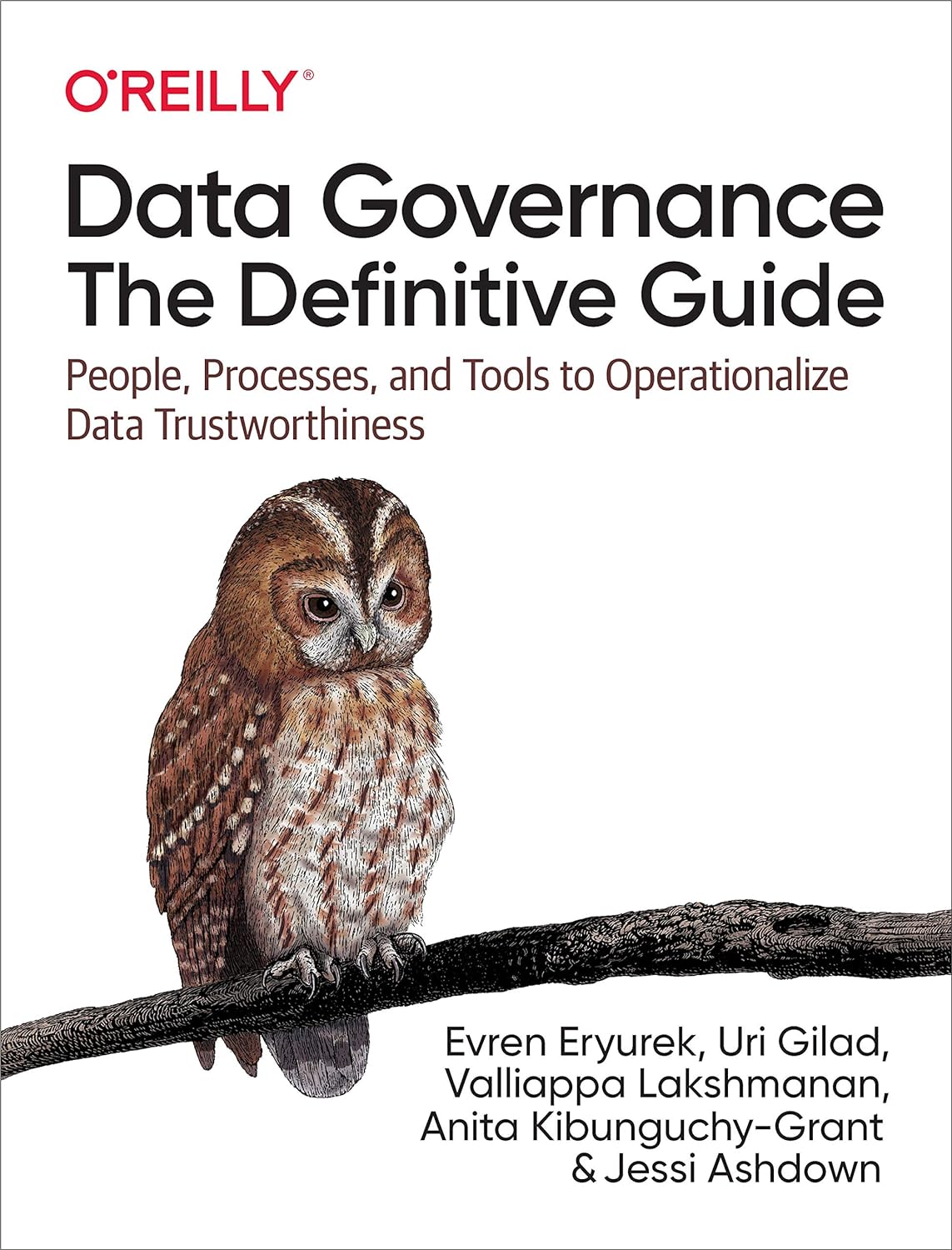
As you move data to the cloud, you need to consider a comprehensive approach to data governance, along with well-defined and agreed-upon policies to ensure your organization meets compliance requirements. Data governance incorporates the ways people, processes, and technology work together to ensure data is trustworthy and can be used effectively. This practical guide shows you how to effectively implement and scale data governance throughout your organization. Chief information, data, and security officers and their teams will learn strategy and tooling to support democratizing data and unlocking its value while enforcing security, privacy, and other governance standards. Through good data governance, you can inspire customer trust, enable your organization to identify business efficiencies, generate more competitive offerings, and improve customer experience. This book shows you how.
Build Data Pipeline with Apache Airflow
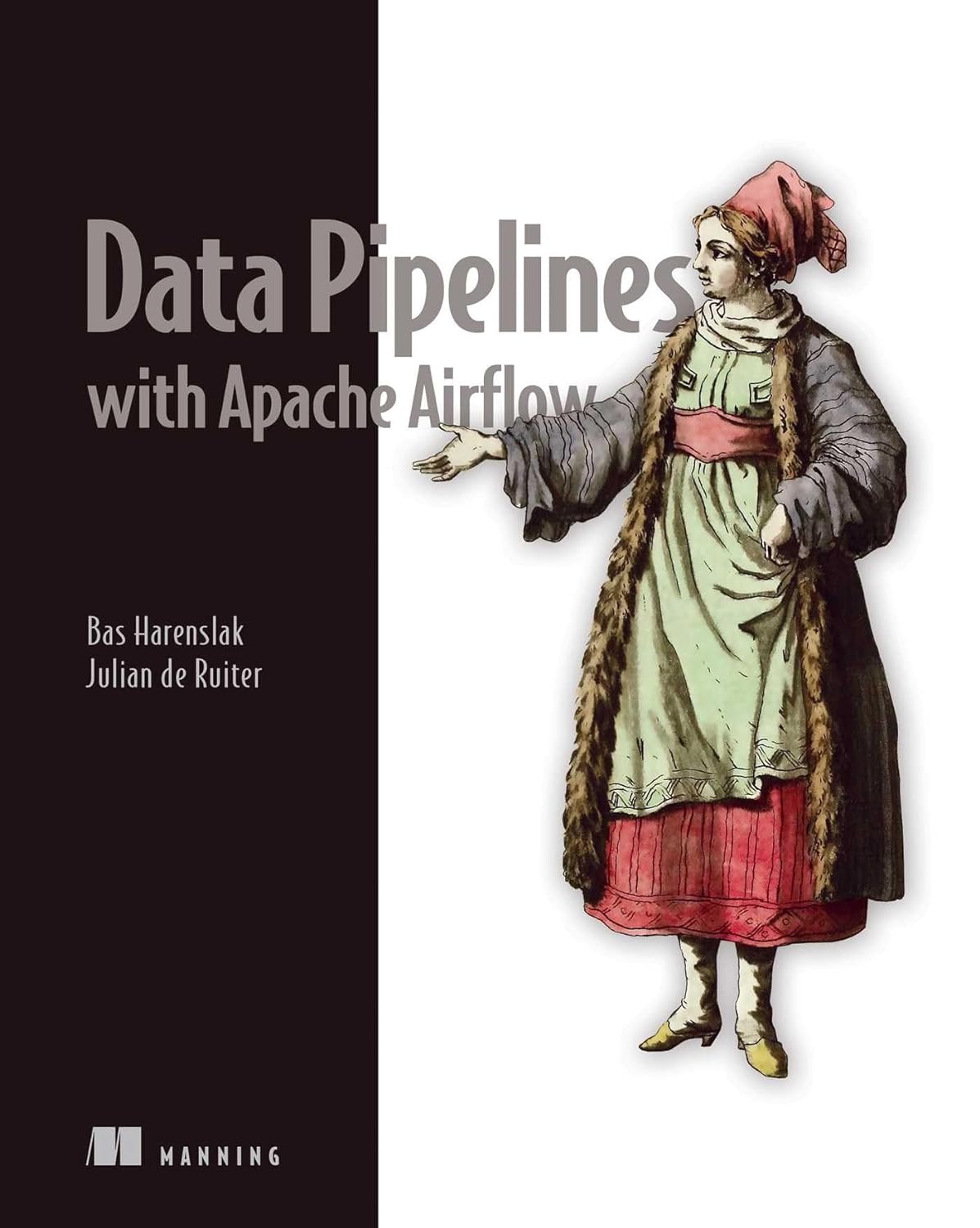
A successful pipeline moves data efficiently, minimizing pauses and blockages between tasks, keeping every process along the way operational. Apache Airflow provides a single customizable environment for building and managing data pipelines, eliminating the need for a hodgepodge collection of tools, snowflake code, and homegrown processes. Using real-world scenarios and examples, Data Pipelines with Apache Airflow teaches you how to simplify and automate data pipelines, reduce operational overhead, and smoothly integrate all the technologies in your stack.
Database Internals
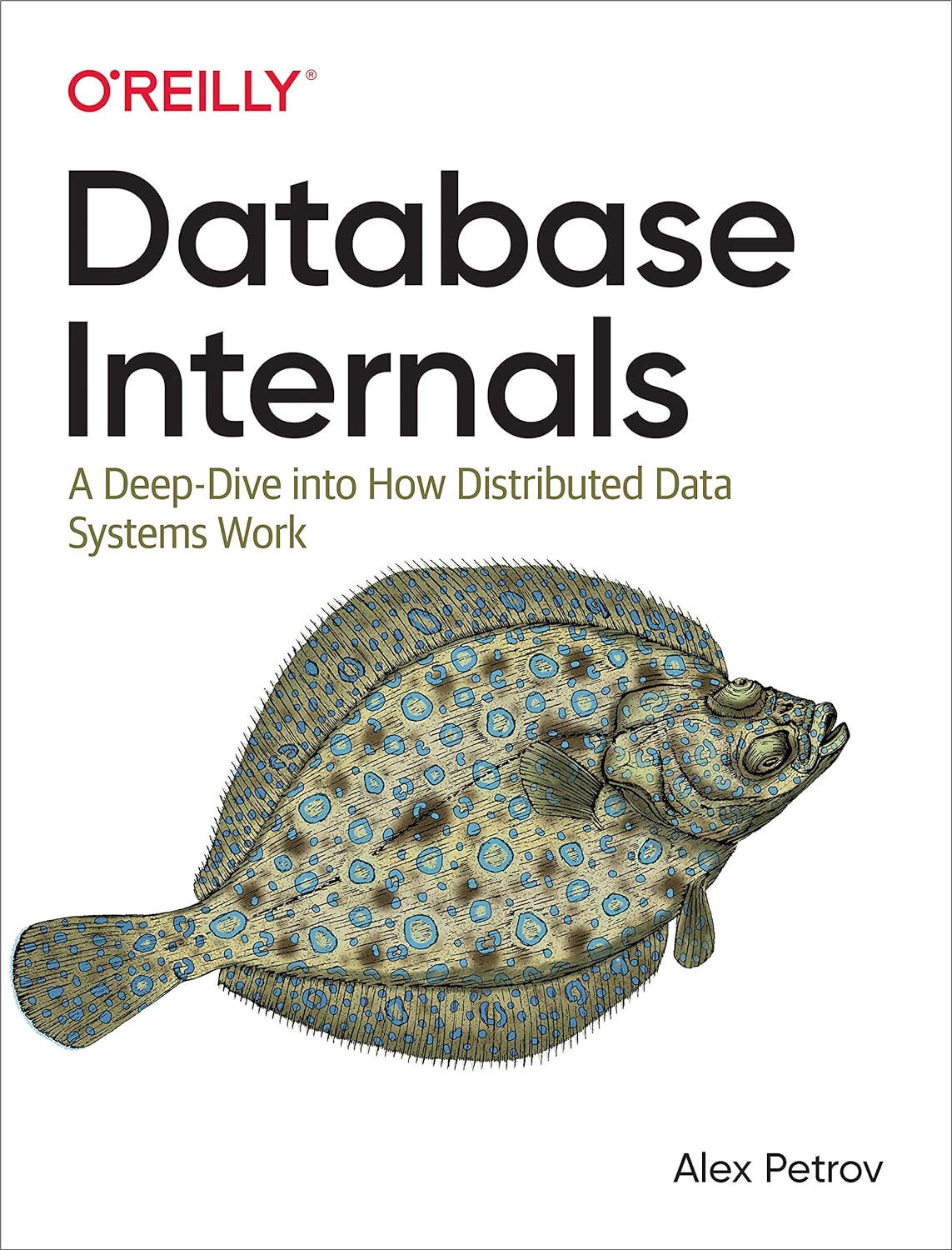
When it comes to choosing, using, and maintaining a database, understanding its internals is essential. But with so many distributed databases and tools available today, it’s often difficult to understand what each one offers and how they differ. With this practical guide, Alex Petrov guides developers through the concepts behind modern database and storage engine internals. Throughout the book, you’ll explore relevant material gleaned from numerous books, papers, blog posts, and the source code of several open source databases. These resources are listed at the end of parts one and two. You’ll discover that the most significant distinctions among many modern databases reside in subsystems that determine how storage is organized and how data is distributed.
Database Systems Design Implementation

Database skills are among the most in-demand IT skills today. Now you can gain a solid foundation in database design and implementation with the practical, easy-to-understand approach in the market-leading DATABASE SYSTEMS: DESIGN, IMPLEMENTATION, AND MANAGEMENT, 13E. Diagrams, illustrations, and tables clarify in-depth coverage of database design. You learn the key to successful database implementation as you study how to properly design databases to fit within the larger strategic data environment. Clear, straightforward writing supports an outstanding balance of theory and practice with hands-on skills today�s employers want. Revised SQL coverage offers more SQL examples and simpler explanations that focus on the areas most important for a database career. More coverage of Big Data Analytics and NoSQL, including related Hadoop technologies, now provides a stronger hands-on approach.
Programming Rust 2nd Edition
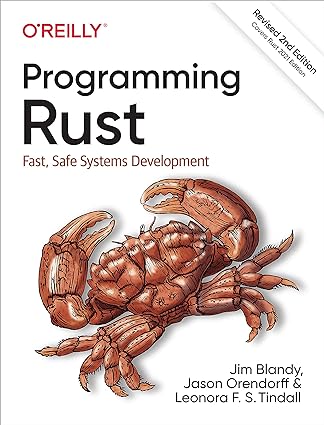
Systems programming provides the foundation for the world's computation. Writing performance-sensitive code requires a programming language that puts programmers in control of how memory, processor time, and other system resources are used. The Rust systems programming language combines that control with a modern type system that catches broad classes of common mistakes, from memory management errors to data races between threads. With this practical guide, experienced systems programmers will learn how to successfully bridge the gap between performance and safety using Rust. Jim Blandy, Jason Orendorff, and Leonora Tindall demonstrate how Rust's features put programmers in control over memory consumption and processor use by combining predictable performance with memory safety and trustworthy concurrency.
Golang Idiomatic
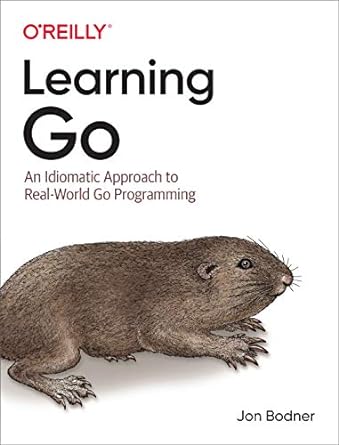
Go is rapidly becoming the preferred language for building web services. While there are plenty of tutorials available that teach Go's syntax to developers with experience in other programming languages, tutorials aren't enough. They don't teach Go's idioms, so developers end up recreating patterns that don't make sense in a Go context. This practical guide provides the essential background you need to write clear and idiomatic Go. No matter your level of experience, you'll learn how to think like a Go developer. Author Jon Bodner introduces the design patterns experienced Go developers have adopted and explores the rationale for using them. You'll also get a preview of Go's upcoming generics support and how it fits into the language.
Learn Postgresql
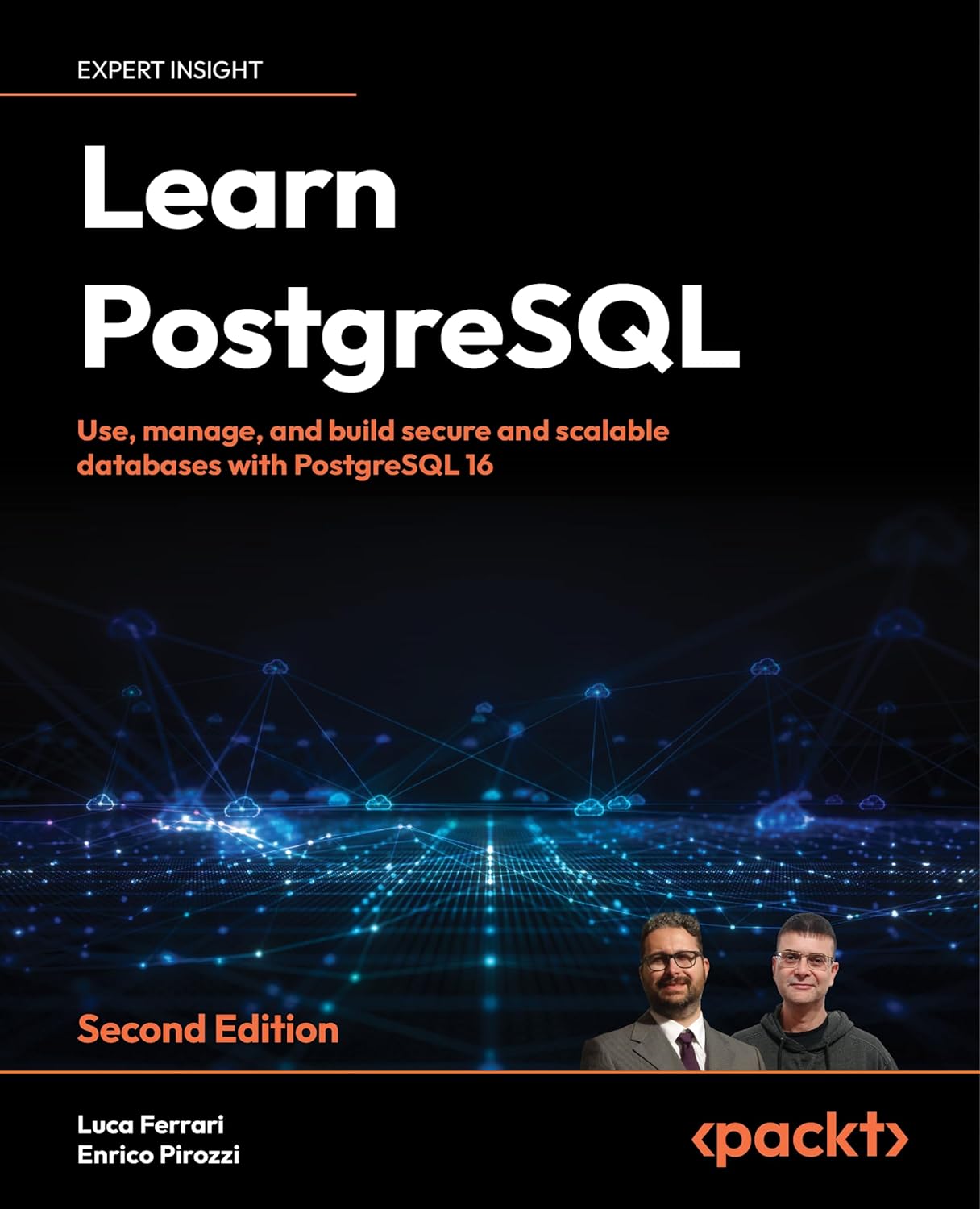
The latest edition of this PostgreSQL book will help you to start using PostgreSQL from absolute scratch, helping you to quickly understand the internal workings of the database. With a structured approach and practical examples, go on a journey that covers the basics, from SQL statements and how to run server-side programs, to configuring, managing, securing, and optimizing database performance. This new edition will not only help you get to grips with all the recent changes within the PostgreSQL ecosystem but will also dig deeper into concepts like partitioning and replication with a fresh set of examples. The book is also equipped with Docker images for each chapter which makes the learning experience faster and easier. Starting with the absolute basics of databases, the book sails through to advanced concepts like window functions, logging, auditing, extending the database, configuration, partitioning, and replication. It will also help you seamlessly migrate your existing database system to PostgreSQL and contains a dedicated chapter on disaster recovery. Each chapter ends with practice questions to test your learning at regular intervals.
PostgreSQL Up and Running
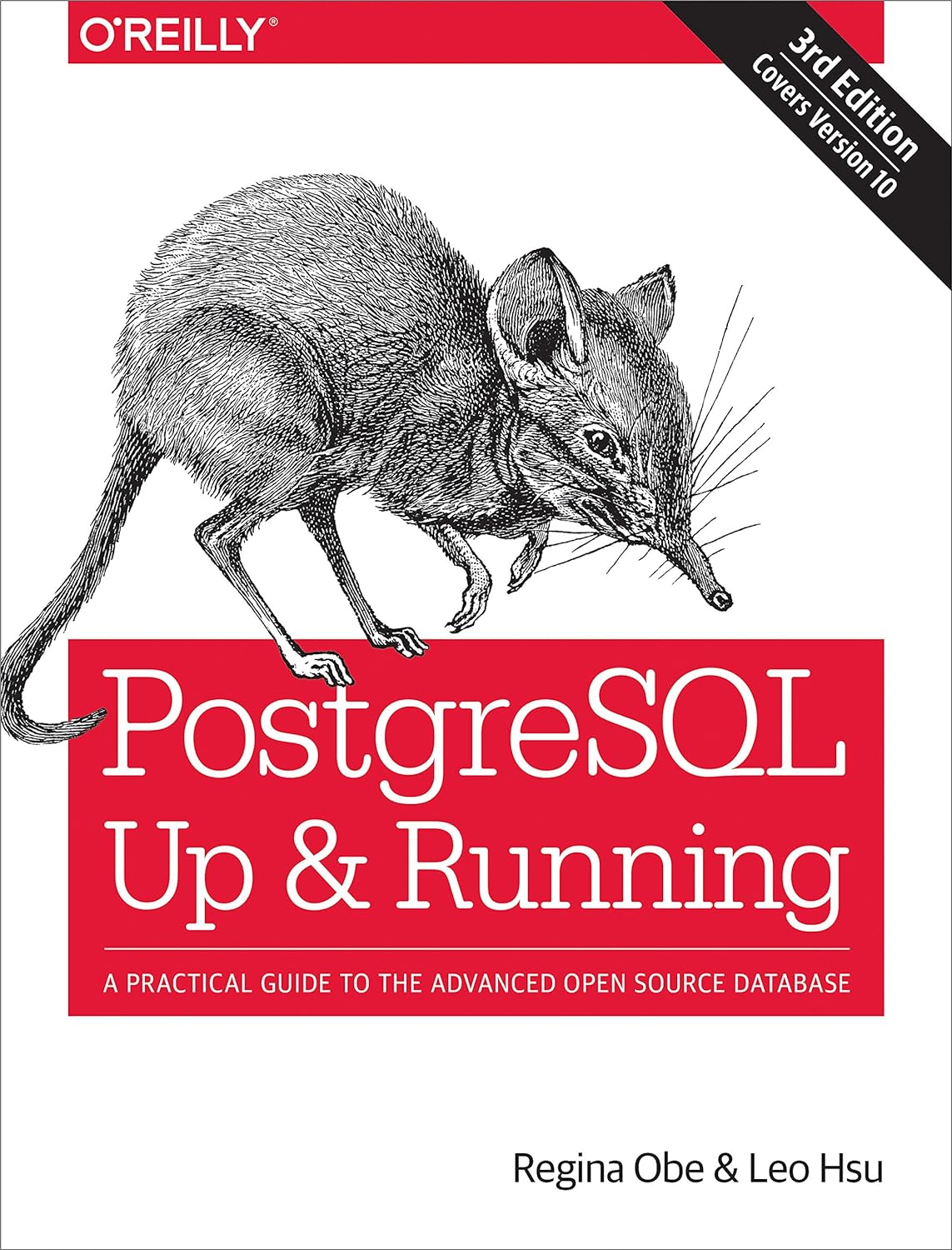
Thinking of migrating to PostgreSQL? This clear, fast-paced introduction helps you understand and use this open source database system. Not only will you learn about the enterprise class features in versions 9.5 to 10, you will also discover that PostgeSQL is more than a database system—it’s an impressive application platform as well. With examples throughout, this book shows you how to achieve tasks that are difficult or impossible in other databases. This third edition covers new features, such as ANSI-SQL constructs found only in proprietary databases until now: foreign data wrapper (FDW) enhancements; new full text functions and operator syntax introduced in version 9.6; XML constructs new in version 10; query parallelization features introduced in 9.6 and enhanced in 10; built-in logical replication introduced in Version 10.e.
Neovim Book

Turn Vim into a full-blown development environment using Vim 8's new features and this sequel to the beloved bestseller Practical Vim. Integrate your editor with tools for building, testing, linting, indexing, and searching your codebase. Discover the future of Vim with Neovim: a fork of Vim that includes a built-in terminal emulator that will transform your workflow. Whether you choose to switch to Neovim or stick with Vim 8, you'll be a better developer.
Tmux Mouse Free Development

Your mouse is slowing you down. The time you spend context switching between your editor and your consoles eats away at your productivity. Take control of your environment with tmux, a terminal multiplexer that you can tailor to your workflow. With this updated second edition for tmux 2.3, you'll customize, script, and leverage tmux's unique abilities to craft a productive terminal environment that lets you keep your fingers on your keyboard's home row.
Terraform In Actions
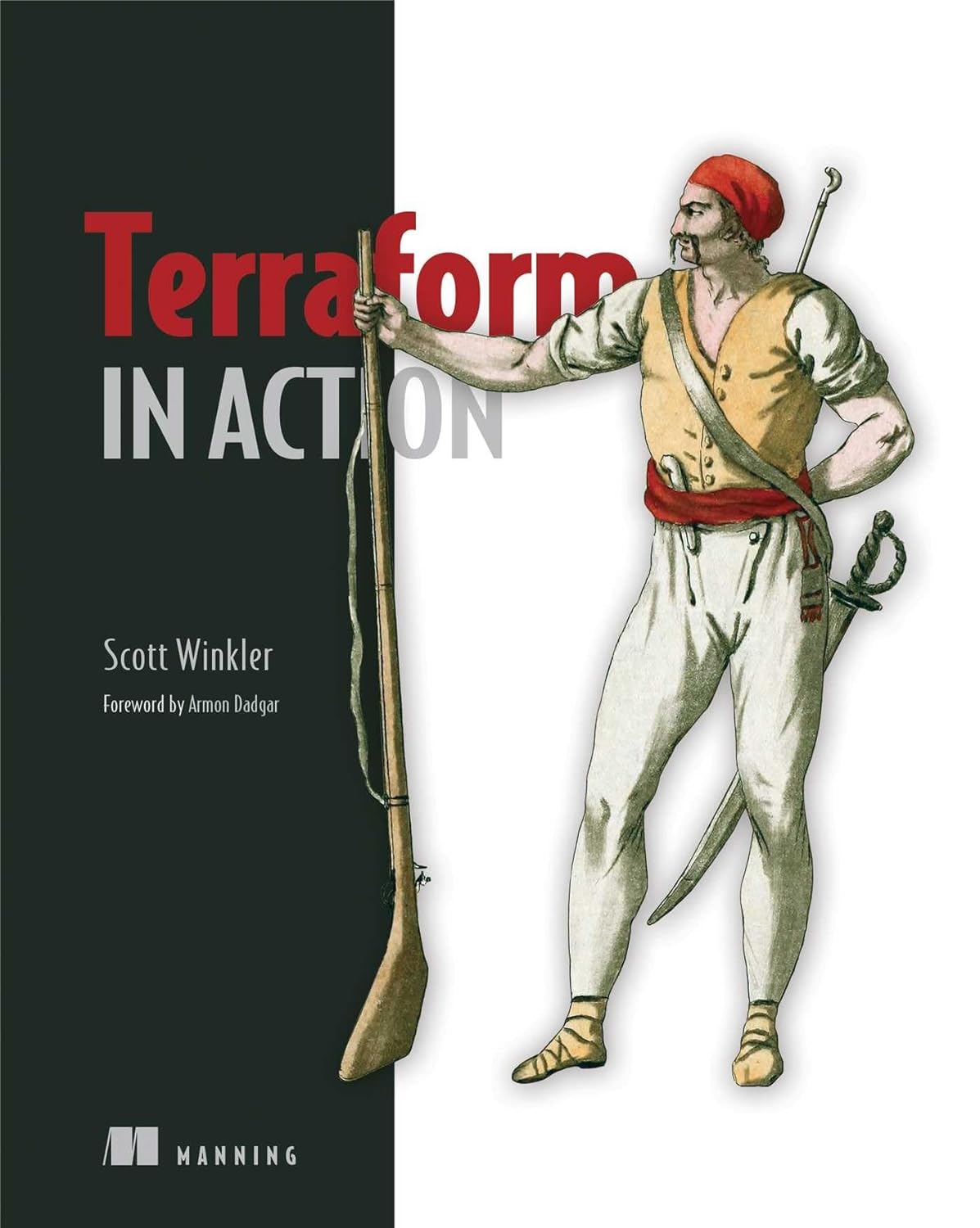
Terraform in Action introduces the infrastructure-as-code (IaC) model that lets you instantaneously create new components and respond efficiently to changes in demand. You’ll use the Terraform automation tool to design and manage servers that can be provisioned, shared, changed, tested, and deployed with a single command.
Cloud Native Golang
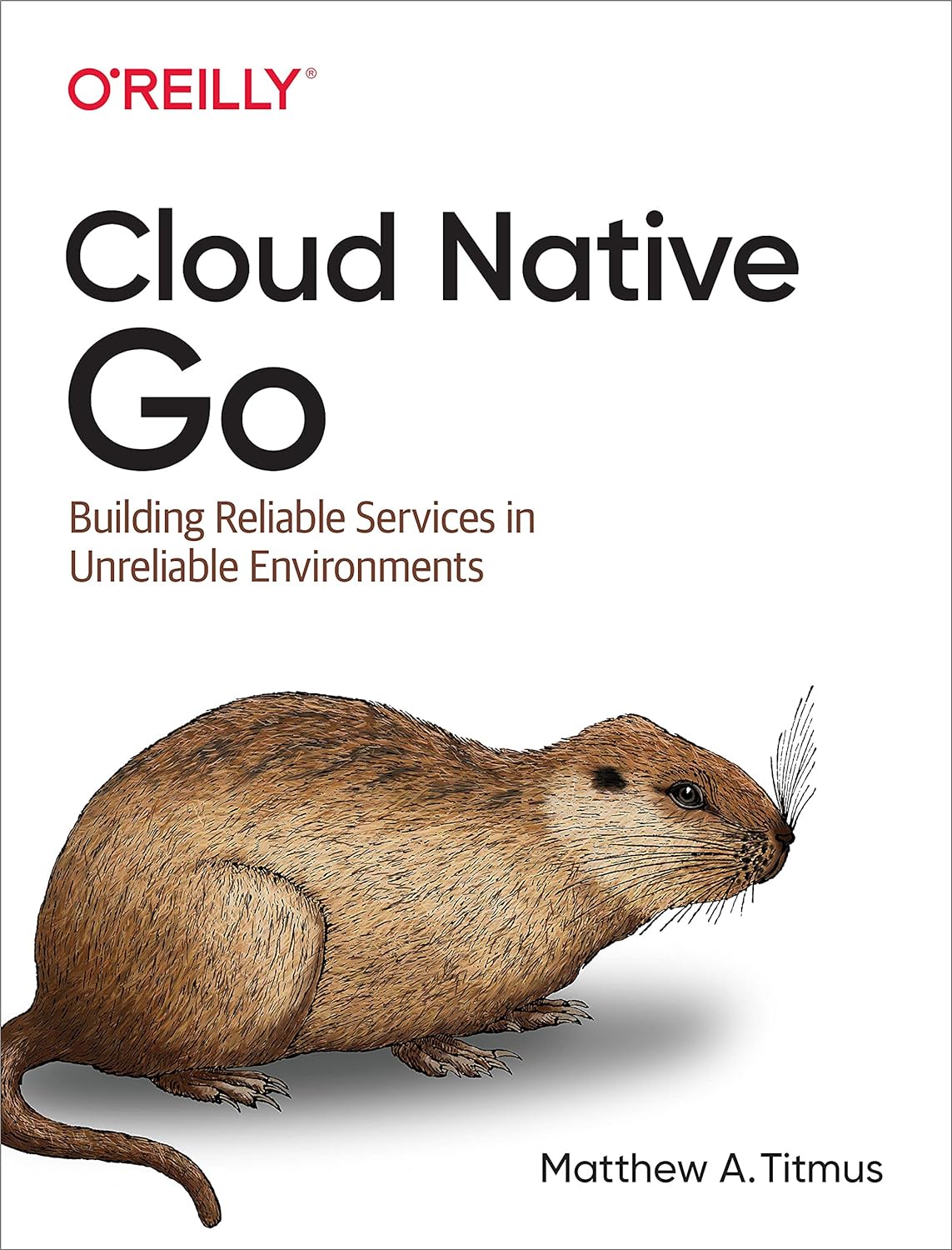
What do Docker, Kubernetes, and Prometheus have in common? All of these cloud native technologies are written in the Go programming language. This practical book shows you how to use Go's strengths to develop cloud native services that are scalable and resilient, even in an unpredictable environment. You'll explore the composition and construction of these applications, from lower-level features of Go to mid-level design patterns to high-level architectural considerations. Each chapter builds on the lessons of the last, walking intermediate to advanced developers through Go to construct a simple but fully featured distributed key-value store. You'll learn best practices for adopting Go as your development language for solving cloud native management and deployment issues.
Programming TypeScript

Any programmer working with a dynamically typed language will tell you how hard it is to scale to more lines of code and more engineers. That’s why Facebook, Google, and Microsoft invented gradual static type layers for their dynamically typed JavaScript and Python code. This practical book shows you how one such type layer, TypeScript, is unique among them: it makes programming fun with its powerful static type system. If you’re a programmer with intermediate JavaScript experience, author Boris Cherny will teach you how to master the TypeScript language. You’ll understand how TypeScript can help you eliminate bugs in your code and enable you to scale your code across more engineers than you could before.
TypeScript Essentials
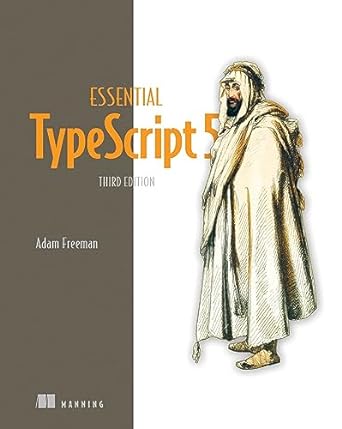
TypeScript enhances JavaScript with static typing, while keeping all the JS flexibility you know and love! It’s the perfect choice for any developer looking to improve the predictability and reliability of their code. Essential TypeScript 5, Third Edition teaches you how to get the most out of TypeScript 5 for a consistent, dependable development experience. Inside Essential TypeScript 5, Third Edition you’ll learn how to: Configure the TypeScript development tools. Use type annotations. Create strongly typed functions and classes. Use generic types. Use type guards to determine types. Create and consume type declaration files. Use TypeScript to create web applications with Angular and React. The book starts you off with a proper understanding of the JavaScript type system that will make using TypeScript so much easier. On that solid foundation, you’ll build your understanding of TypeScript development, following a hands-on learning path all the way to TypeScript’s advanced features.
The Go Programming Language
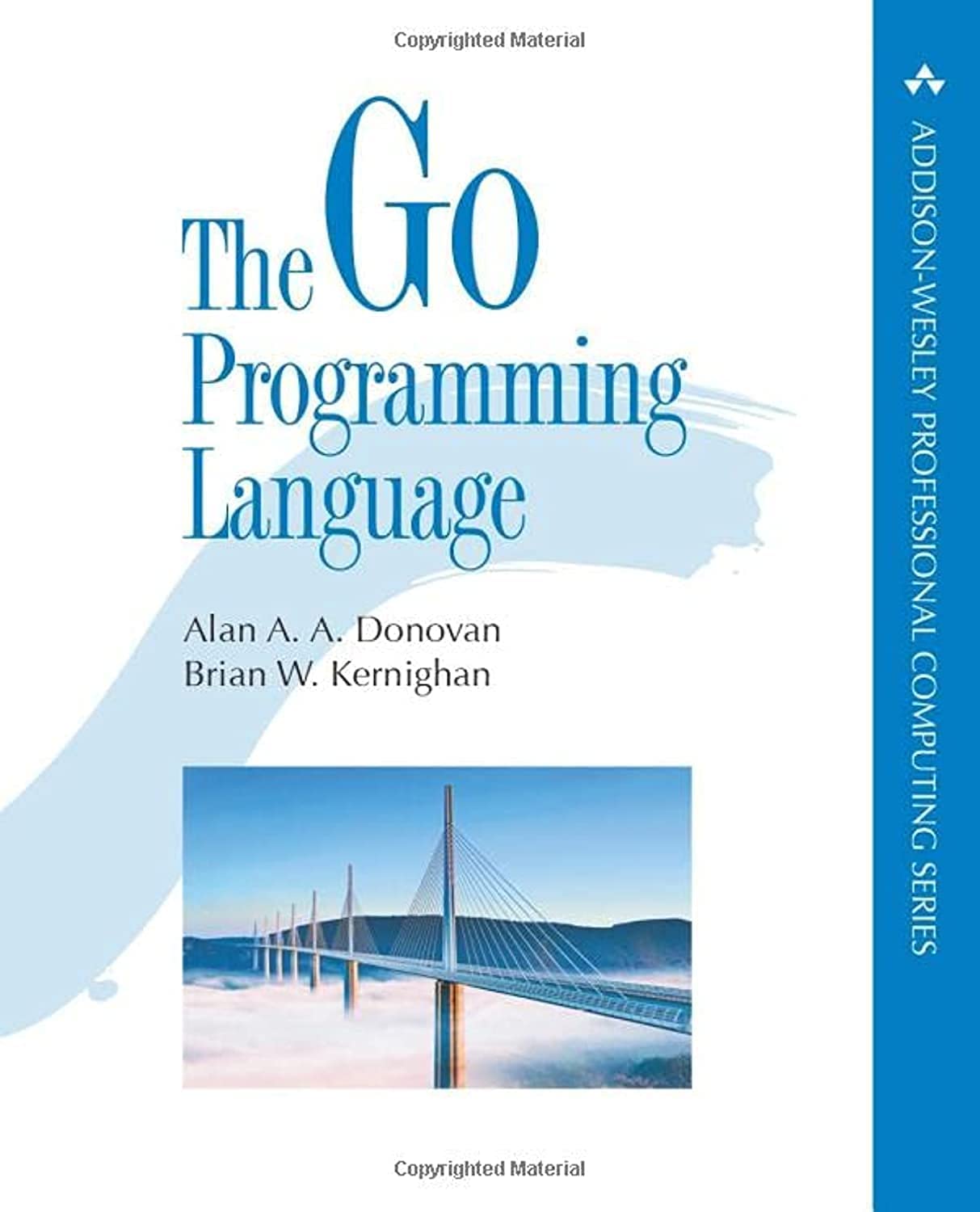
Google’s Go team member Alan A. A. Donovan and Brian Kernighan, co-author of The C Programming Language, provide hundreds of interesting and practical examples of well-written Go code to help programmers learn this flexible, and fast, language. It is designed to get you started programming with Go right away and then to progress on to more advanced topics.
Build an Orchestrator in Go
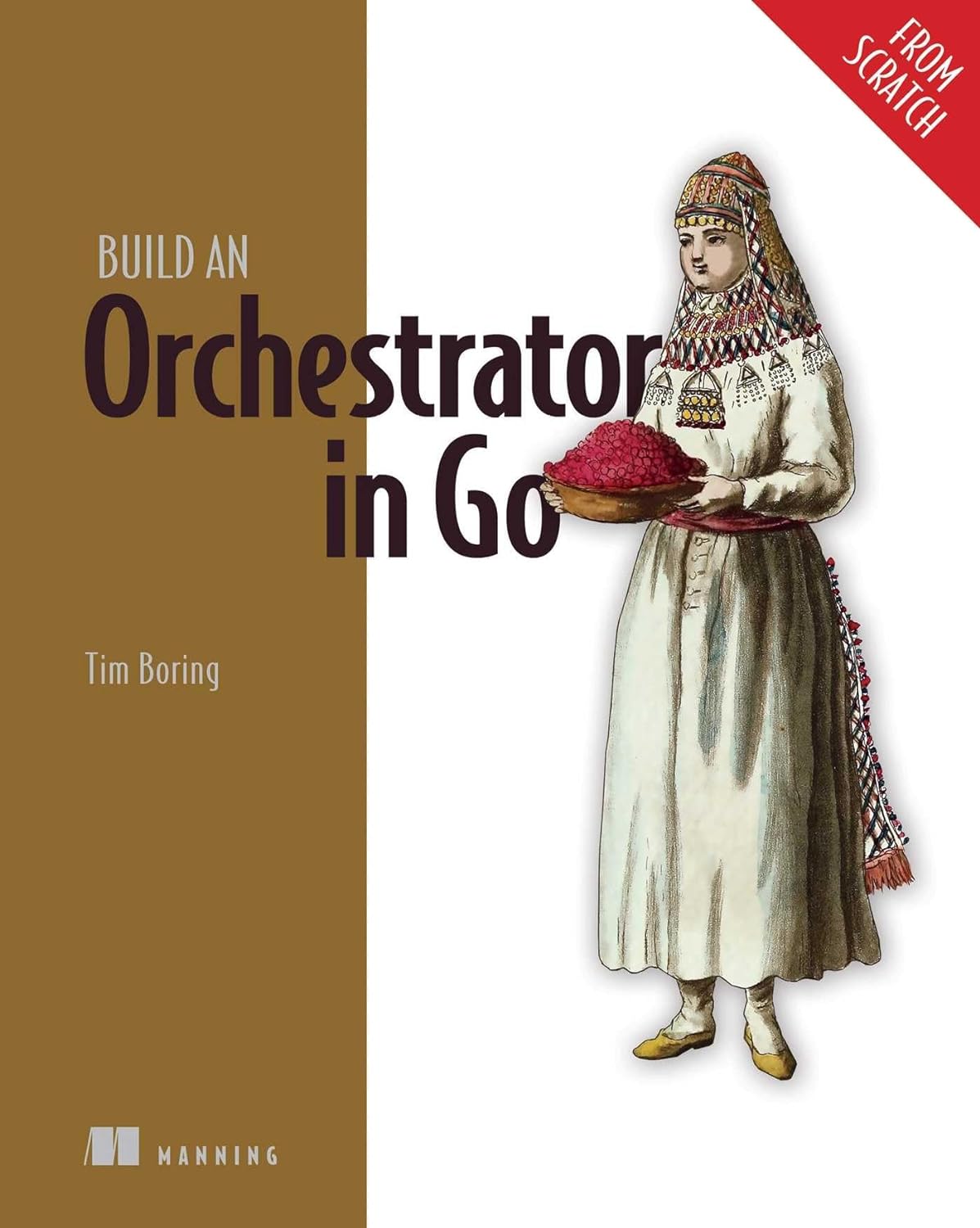
Orchestration systems like Kubernetes can seem like a black box: you deploy to the cloud and it magically handles everything you need. That might seem perfect—until something goes wrong and you don’t know how to find and fix your problems. Build an Orchestrator in Go (From Scratch) reveals the inner workings of orchestration frameworks by guiding you through creating your own. Build an Orchestrator in Go (From Scratch) explains each stage of creating an orchestrator with diagrams, step-by-step instructions, and detailed Go code samples. Don’t worry if you’re not a Go expert. The book’s code is optimized for simplicity and readability, and its key concepts are easy to implement in any language. You’ll learn the foundational principles of these frameworks, and even how to manage your orchestrator with a command line interface.
System Performance: Enterprise and the Cloud

Large-scale enterprise, cloud, and virtualized computing systems have introduced serious performance challenges. Now, internationally renowned performance expert Brendan Gregg has brought together proven methodologies, tools, and metrics for analyzing and tuning even the most complex environments. Systems Performance: Enterprise and the Cloud focuses on Linux® and Unix® performance, while illuminating performance issues that are relevant to all operating systems. You&;ll gain deep insight into how systems work and perform, and learn methodologies for analyzing and improving system and application performance. Gregg presents examples from bare-metal systems and virtualized cloud tenants running Linux-based Ubuntu®, Fedora®, CentOS, and the illumos-based Joyent® SmartOS&; and OmniTI OmniOS®. He systematically covers modern systems performance, including the &;traditional&; analysis of CPUs, memory, disks, and networks, and new areas including cloud computing and dynamic tracing. This book also helps you identify and fix the &;unknown unknowns&; of complex performance: bottlenecks that emerge from elements and interactions you were not aware of. The text concludes with a detailed case study, showing how a real cloud customer issue was analyzed from start to finish.
Kubernetes Programming with Go
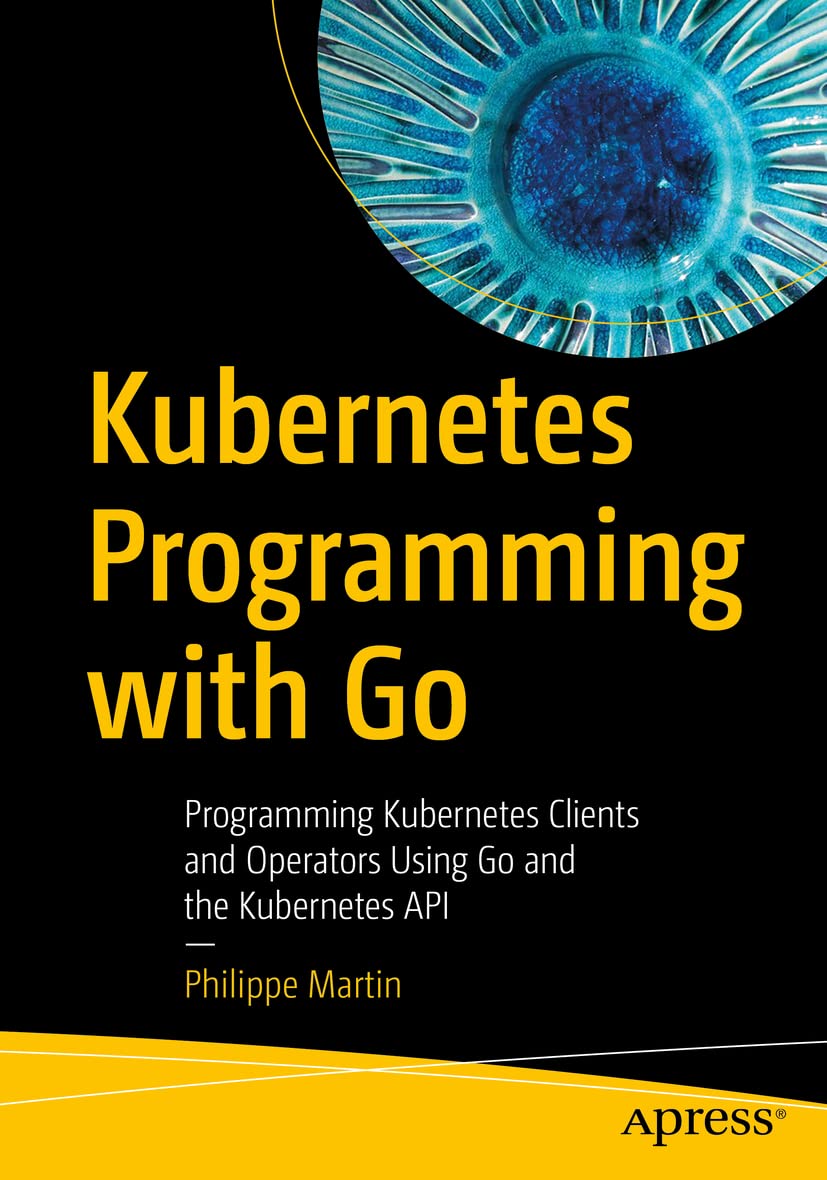
This book begins by introducing the structure of the Kubernetes API and which operations it serves. Following chapters demonstrate how to write native Kubernetes resources definitions using Go structures defined in the API and API Machinery libraries. Miscellaneous utilities are described to help you work with different resource fields and to convert your resource definitions to or from YAML or JSON. Next, you will learn how to interact with the Kubernetes API server to create, delete, update, and monitor resources in a cluster using the client-go library. A complete chapter is devoted to tools provided to test your programs using the client-go library. An example follows to wrap up the first part of the book, describing how to write a kubectl plugin. Next, you will learn how to extend the Kubernetes API using Custom Resource Definitions, and how to write Kubernetes resources in a generic way as well as how to create your own resources using the unstructured concept. The next chapters delve into the controller-runtime library, useful for extending Kubernetes by writing operators, and the kubebuilder framework, which leverages this library, to help you start writing operators in minutes.
AWS in Actions
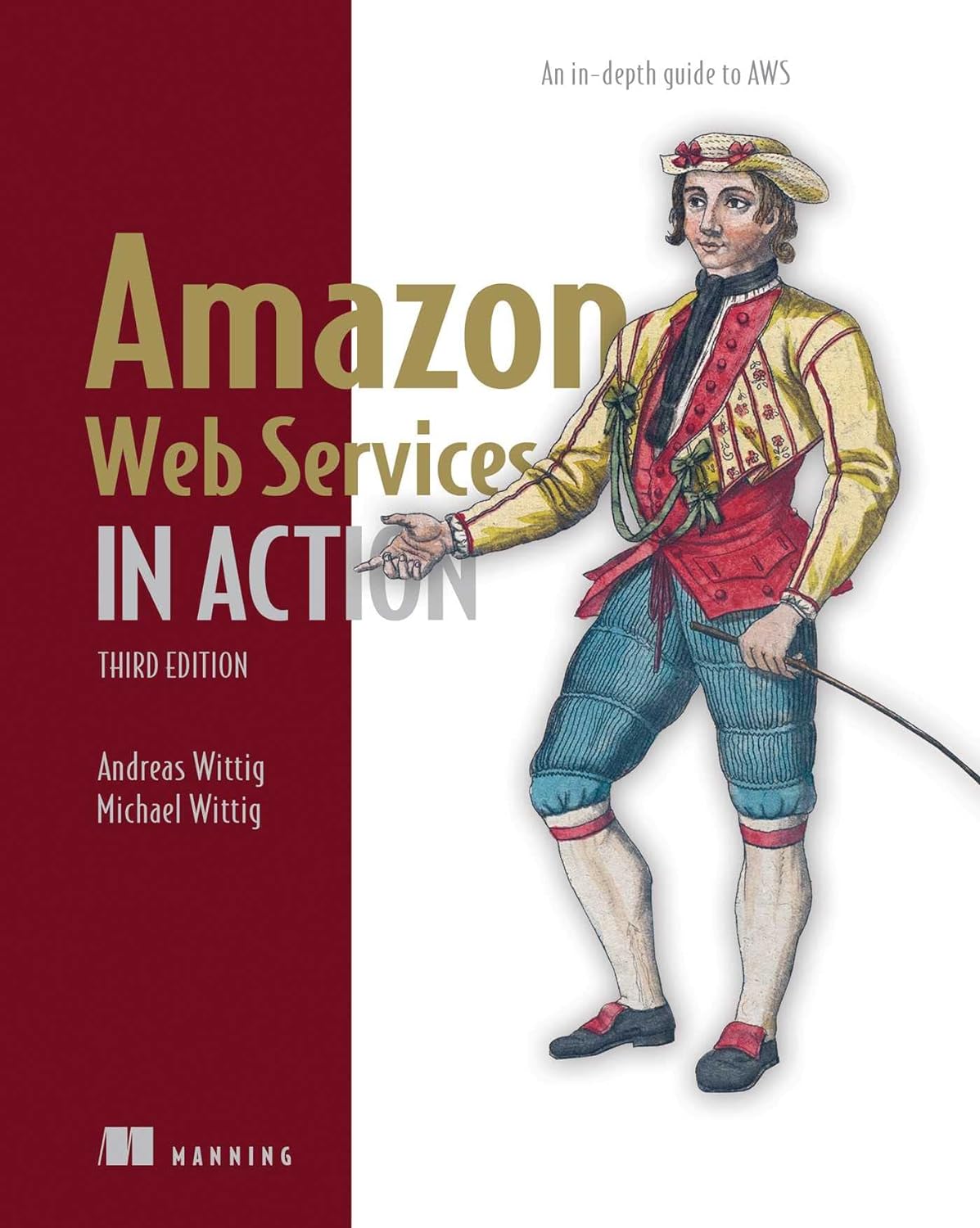
Thousands of developers have chosen Amazon Web Services in Action: An in-depth guide to AWS to help them succeed with the AWS cloud. Readers love this all-practical handbook for its complete introduction to computing, storage, and networking, along with best practices for all core AWS services. This revised third edition features new chapters on containerization, along with a variety of AWS innovations. You’ll also learn how automating your infrastructure with IAC is a game changer for your cloud deployment, delivering a massive boost to efficiency and quality. Purchase of the print book includes a free eBook in PDF, Kindle, and ePub formats from Manning Publications.
Kubernetes in Action
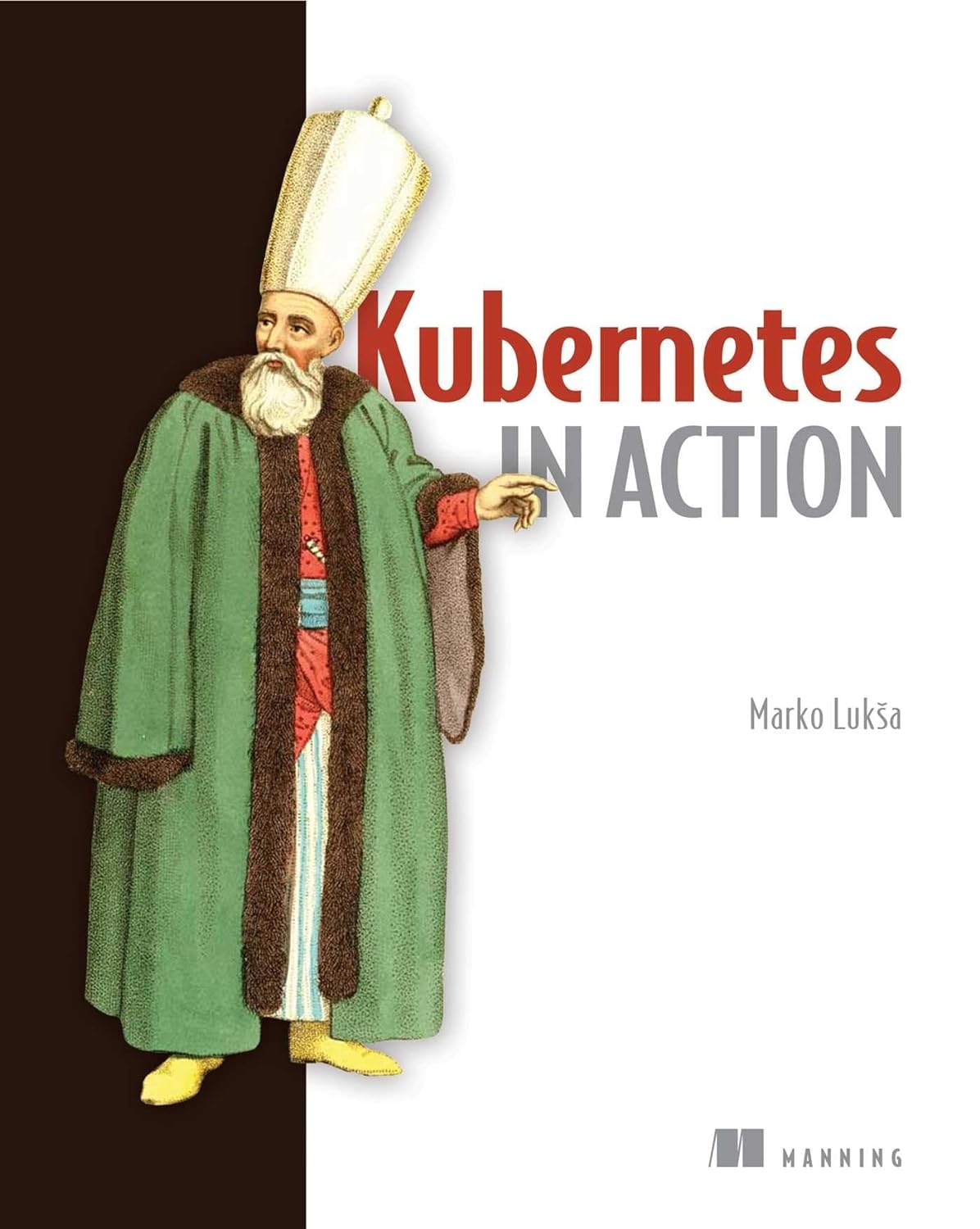
Kubernetes in Action is a comprehensive guide to effectively developing and running applications in a Kubernetes environment. Before diving into Kubernetes, the book gives an overview of container technologies like Docker, including how to build containers, so that even readers who haven't used these technologies before can get up and running. Purchase of the print book includes a free eBook in PDF, Kindle, and ePub formats from Manning Publications.
AWS in Actions

NGINX is one of the most widely used web servers available today, in part because of itscapabilities as a load balancer and reverse proxy server for HTTP and other network protocols. This revised cookbook provides easy-to-follow examples of real-world problems in application delivery. Practical recipes help you set up and use either the open source or commercial offering to solve problems in various use cases. For professionals who understand modern web architectures, such as n-tier or microservice designs and common web protocols such as TCP and HTTP, these recipes provide proven solutions for security and software load balancing and for monitoring and maintaining NGINX's application delivery platform. You'll also explore advanced features of both NGINX and NGINX Plus, the free and licensed versions of this server.
NGINX HTTP Server
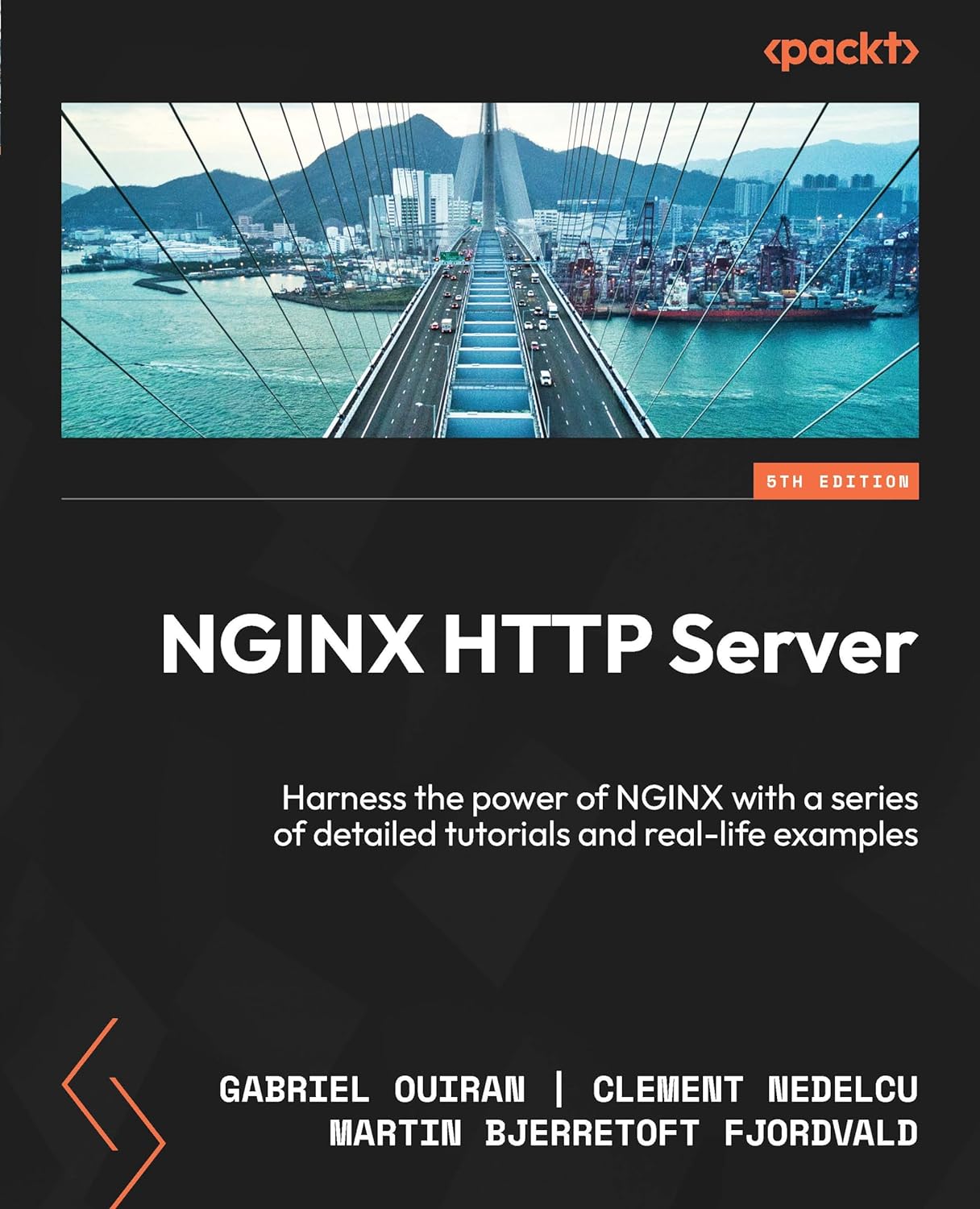
Explore the capabilities of NGINX, a robust HTTP server designed for handling high-traffic websites, with network scalability as its primary objective. Whether you're a beginner or an experienced administrator, this NGINX book will guide you through the complete process of setting up this lightweight HTTP server, from quick and basic configurations to more detailed configurations tailored to your needs. Highlighting the latest version 1.25.2, featuring new features such as HTTP/3 and QUIC, this edition keeps you up to date with cutting-edge developments. This book is packed with a multitude of real-world examples, which will help you secure your infrastructure with automatic TLS certificates, expertly place NGINX in front of your existing applications, and do much more. From orchestration and Docker to bandwidth management, OpenResty, and NGINX Plus commercial features, you'll get to grips with enhancing and optimizing your infrastructure or designing brand-new architecture. Moreover, this updated edition will show you how NGINX excels in cloud environments with guides on integrating NGINX with cloud services for deploying scalable architectures efficiently and securely.
Learn Grafana 2023
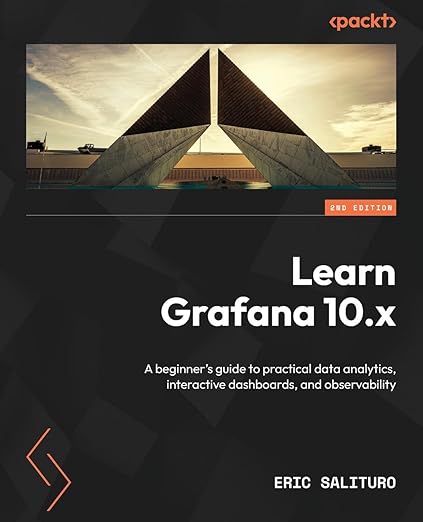
As modern application architecture grows increasingly complex, identifying potential points of failure and measuring end user satisfaction, in addition to monitoring application availability, is key. This book helps you explore AWS observability tools that provide end-to-end visibility, enabling quick identification of performance bottlenecks in distributed applications. You will gain a holistic view of monitoring and observability on AWS, starting from observability basics using Amazon CloudWatch and AWS X-Ray to advanced ML-powered tools such as AWS DevOps Guru. As you progress, you'll learn about AWS-managed open source services such as AWS Distro for OpenTelemetry (ADOT) and AWS managed Prometheus, Grafana, and the ELK Stack. You’ll implement observability in EC2 instances, containers, Kubernetes, and serverless apps and grasp UX monitoring. With a fair mix of concepts and examples, this book helps you gain hands-on experience in implementing end-to-end AWS observability in your applications and navigating and troubleshooting performance issues with the help of use cases. You'll also learn best practices and guidelines, such as how observability relates to the Well-Architected Framework.By the end of this AWS book, you’ll be able to implement observability and monitoring in your apps using AWS’ native and managed open source tools in real-world scenarios.
Observability Hand Book

Get ready to unlock the full potential of the open-source Grafana observability platform, ideal for analyzing and monitoring time-series data with this updated second edition. This beginners guide will help you get up to speed with Grafana's latest features for querying, visualizing, and exploring logs and metrics, no matter where they are stored. Starting with the basics, this book demonstrates how to quickly install and set up a Grafana server using Docker. You'll then be introduced to the main components of the Grafana interface before learning how to analyze and visualize data from sources such as InfluxDB, Telegraf, Prometheus, Logstash, and Elasticsearch. The book extensively covers key panel visualizations in Grafana, including Time Series, Stat, Table, Bar Gauge, and Text, and guides you in using Python to pipeline data, transformations to facilitate analytics, and templating to build dynamic dashboards. Exploring real-time data streaming with Telegraf, Promtail, and Loki, you'll work with observability features like alerting rules and integration with PagerDuty and Slack. As you progress, the book addresses the administrative aspects of Grafana, from configuring users and organizations to implementing user authentication with Okta and LDAP, as well as organizing dashboards into folders, and more.
High Performance MySQL 4th Edition
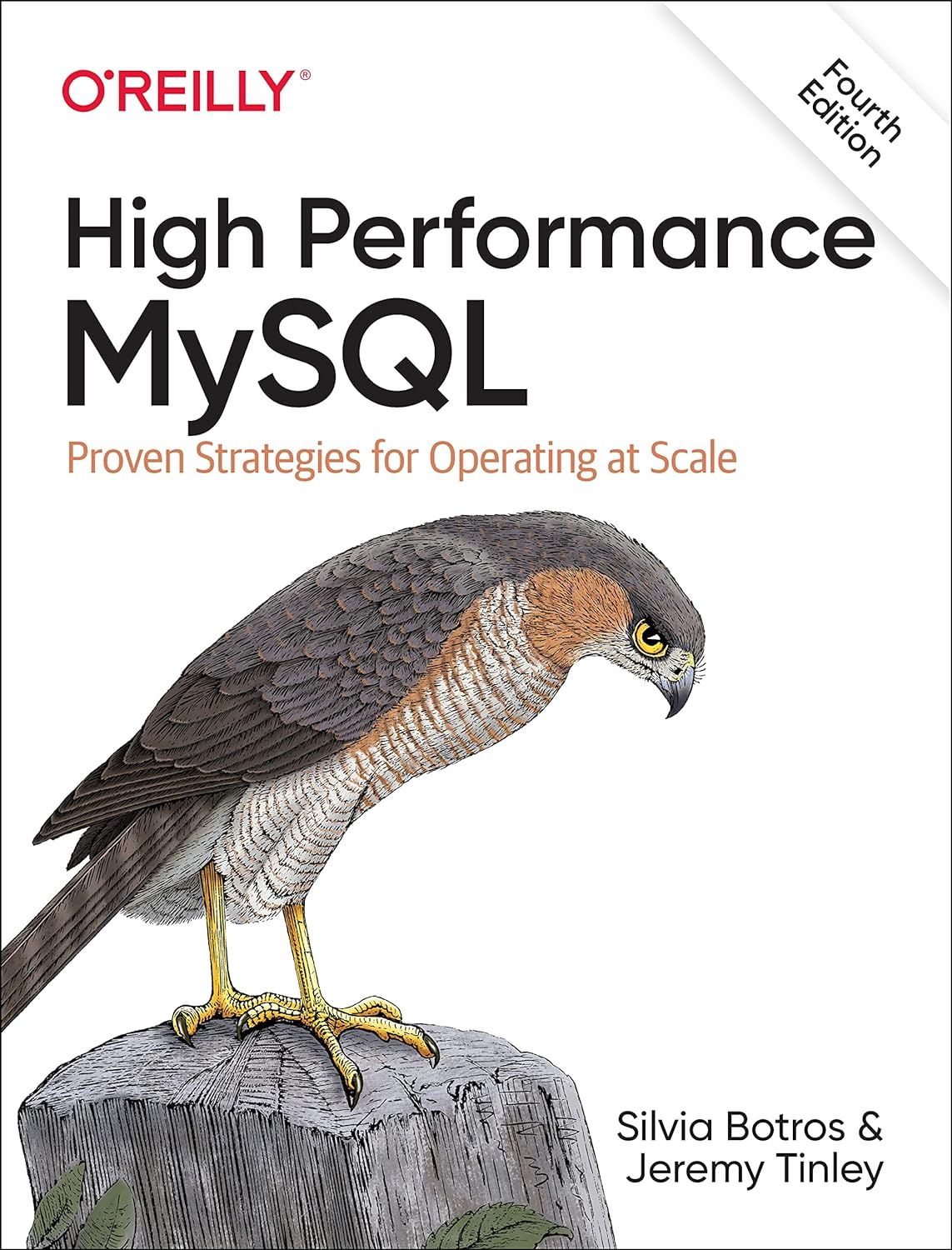
How can you realize MySQL's full power? With High Performance MySQL, you'll learn advanced techniques for everything from setting service-level objectives to designing schemas, indexes, and queries to tuning your server, operating system, and hardware to achieve your platform's full potential. This guide also teaches database administrators safe and practical ways to scale applications through replication, load balancing, high availability, and failover. Updated to reflect recent advances in cloud- and self-hosted MySQL, InnoDB performance, and new features and tools, this revised edition helps you design a relational data platform that will scale with your business. You'll learn best practices for database security along with hard-earned lessons in both performance and database stability.
Database Design and Implementation

This textbook examines database systems from the viewpoint of a software developer. This perspective makes it possible to investigate why database systems are the way they are. It is of course important to be able to write queries, but it is equally important to know how they are processed. We e.g. don’t want to just use JDBC; we also want to know why the API contains the classes and methods that it does. We need a sense of how hard is it to write a disk cache or logging facility. And what exactly is a database driver, anyway?
Mastering OpenTelemetry and Observability

In Mastering Observability and OpenTelemetry: Enhancing Application and Infrastructure Performance and Avoiding Outages, accomplished engineering leader and open source contributor Steve Flanders unlocks the secrets of enterprise application observability with a comprehensive guide to OpenTelemetry (OTel). Explore how OTel transforms observability, providing a robust toolkit for capturing and analyzing telemetry data across your environment.
